A Seoulful Weekend
South Korea had been on my short list of places I must visit for a long time and for several reasons. Many moons (hah!) ago, I was offered a position as an English teacher at a high school in Seoul and nearly accepted the role. Had it not been for a nasty case of shingles that sidelined me for several weeks and caused me to miss the opportunity, I would have been on a very different course, indeed. I’ve always seen South Korea as an on-ramp to a parallel life and have been curious ever since to see what this other realm might look like.
Trey and I were also particularly curious to learn more about Korean Temple Food after watching an episode of the acclaimed Netflix series Chef’s Table, featuring the esteemed Buddhist nun Jeong Kwan. Her patience, precision and presence drew us in, and we knew we had to do whatever we could to visit Seoul during our journey through Asia. I was fortunately able to make some last minute adjustments to our calendar and flight schedule before leaving for summer in Europe, and so, in late July we touched down in the Korean capital city.
After the bucolic calm of volunteering on the organic farm in Japan, it was certainly a shock to the system to be back in any city, not to mention one of the most dynamic and dense megacities in the world. After a grueling day of travel from the northern Japanese Alps, we finally made it to our cozy and perfectly located Airbnb in Seoul's historic Bukchon Hanok village (thanks for the recommendation, Jasmine!) with its prime position near many of the important sites, including the Gyeongbokgung Palace, Changdeokgung Palace and Jongmyo Shrine.
Bukchon Hanok village is comprised of nearly 900 well-preserved traditional Korean houses, or hanoks, representing urban life from more than 600 years ago. The charming area of winding alleyways offers views of a more modern Seoul and is a great place to learn about ancient Korean architecture and customs as many of the homes have been converted into museums for traditional crafts, such as tapestry making or pottery. On our first morning in Seoul, with coffee in hand, we took advantage of an early morning stroll through the village, avoiding the regular crush of tourists who come from all over the world to take in this striking site.
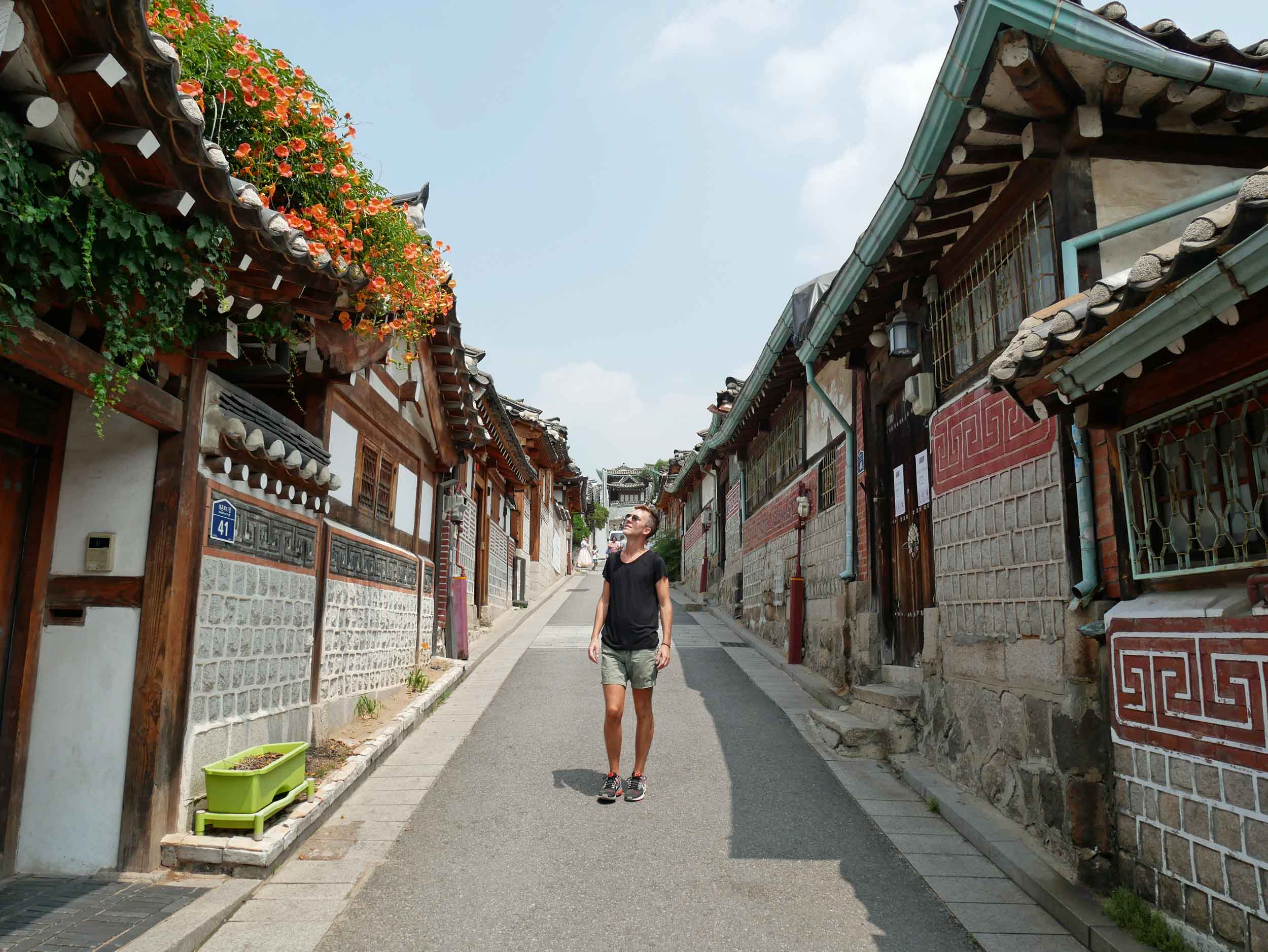
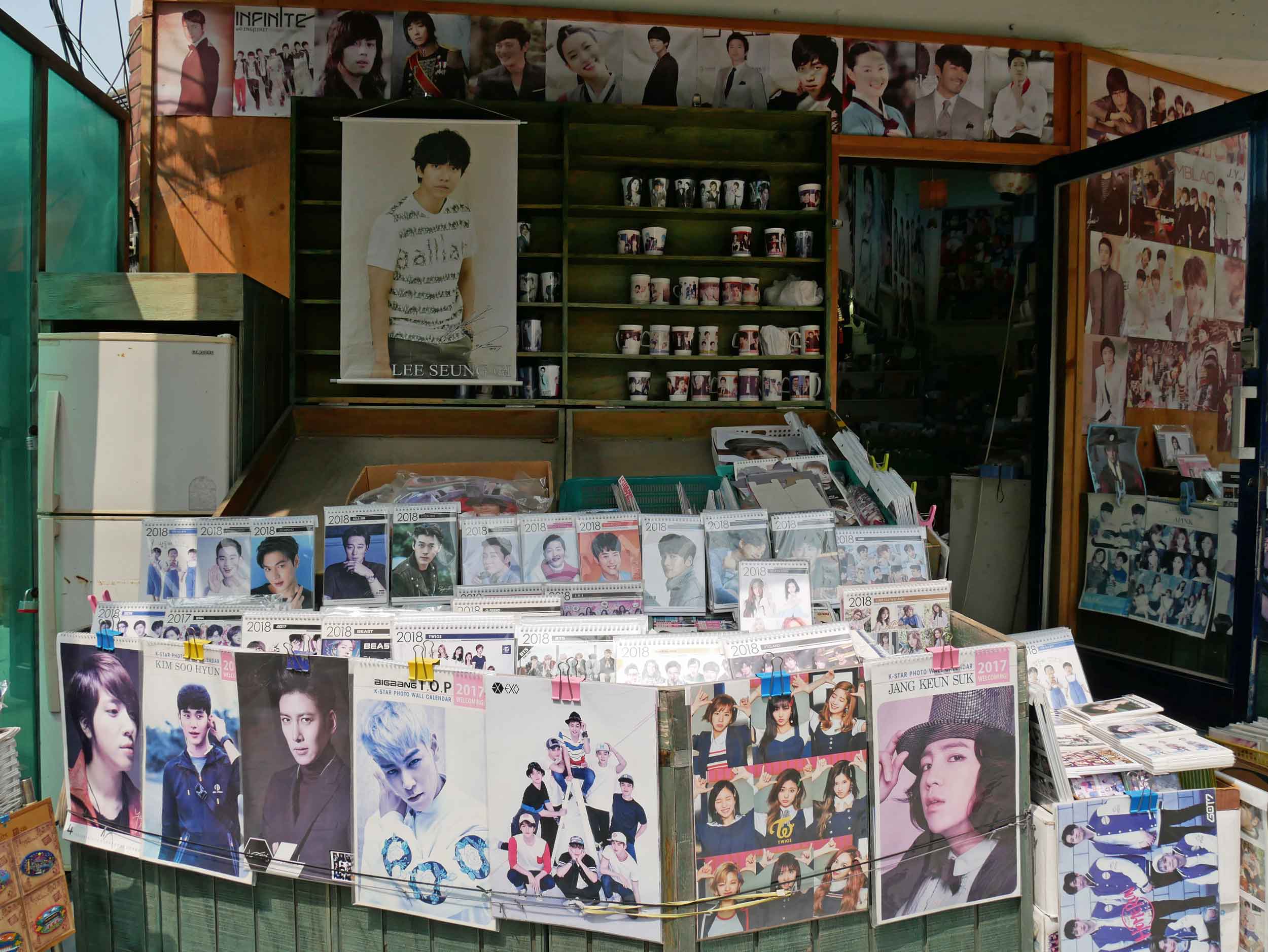
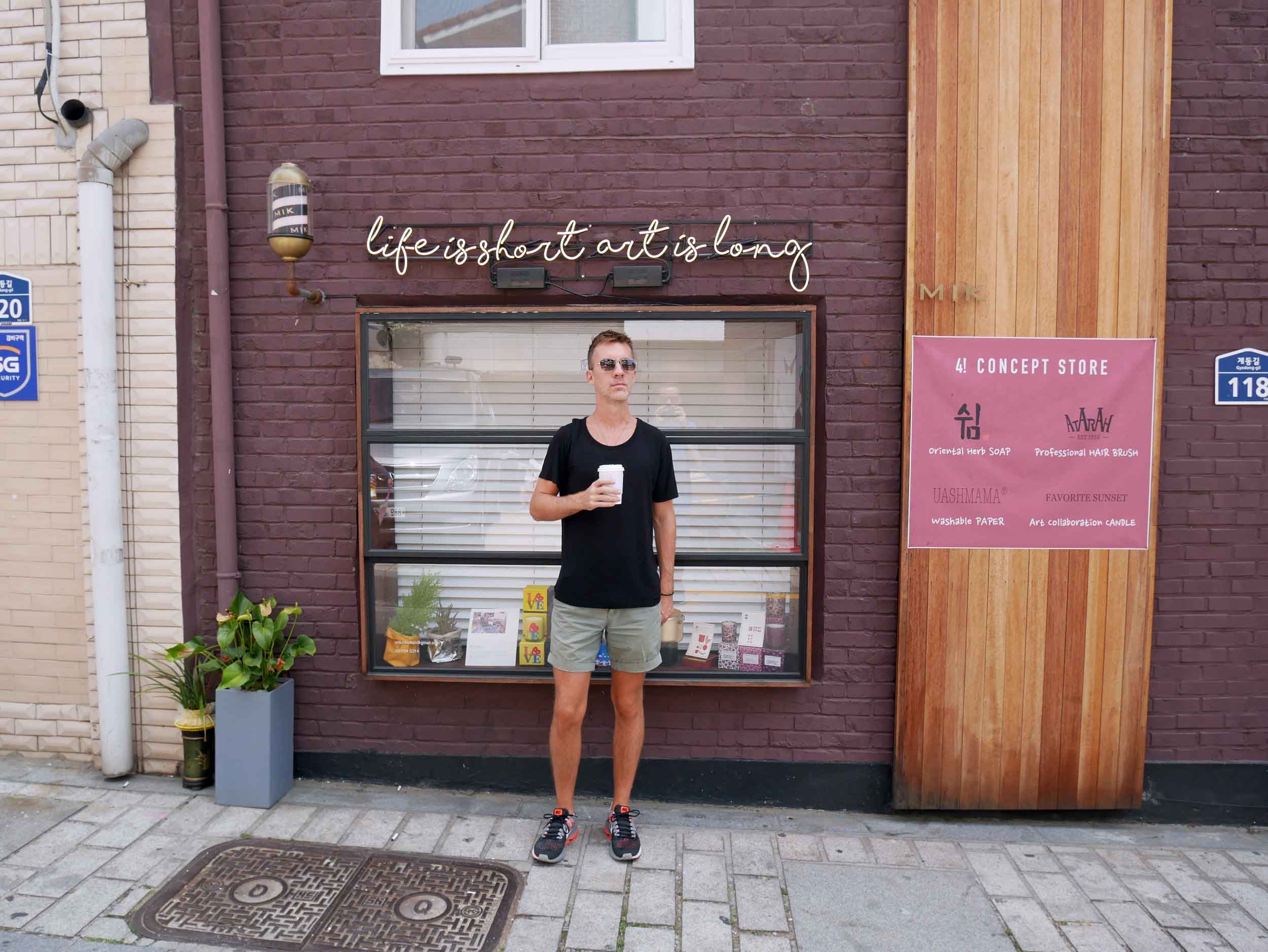
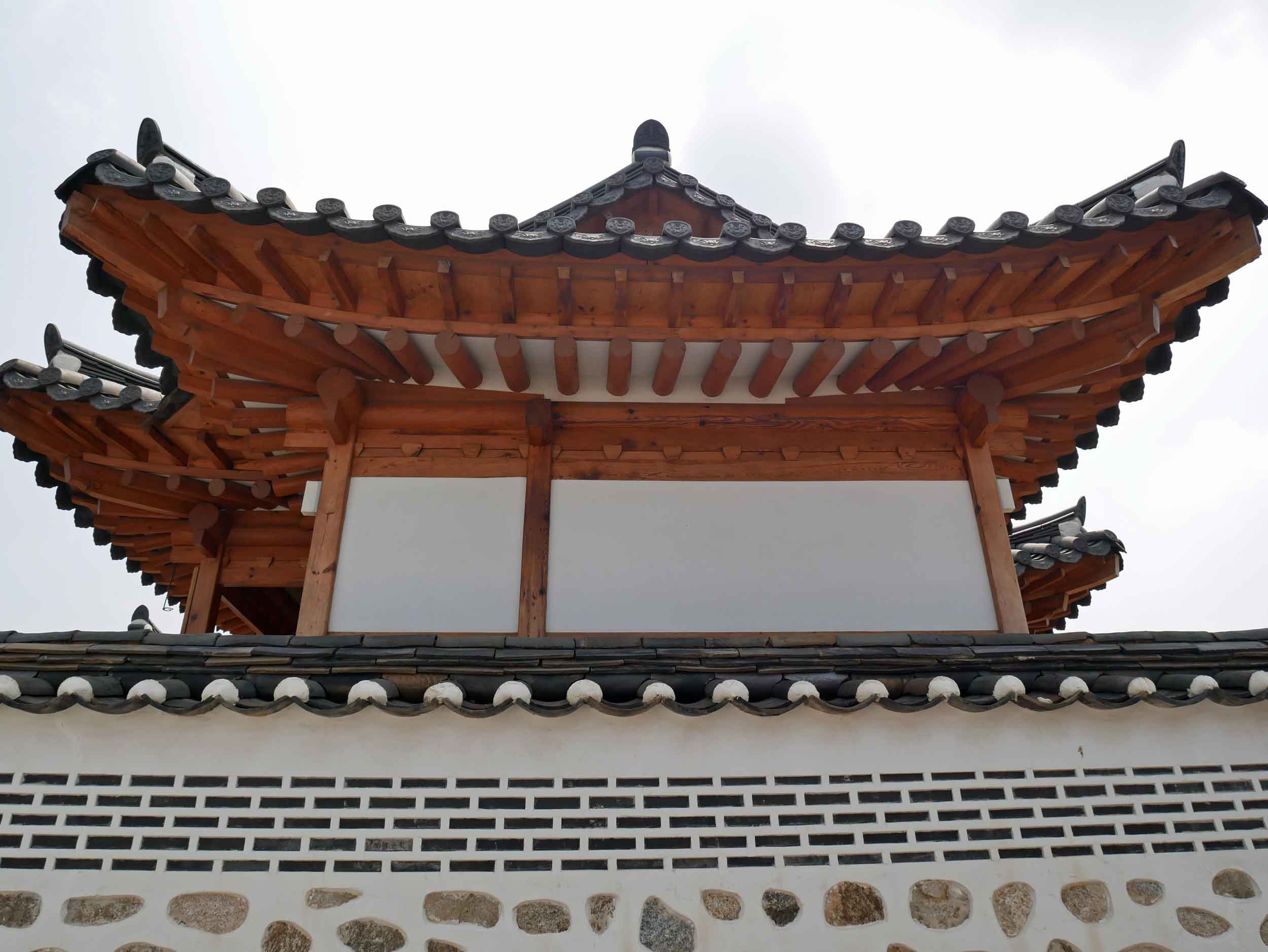
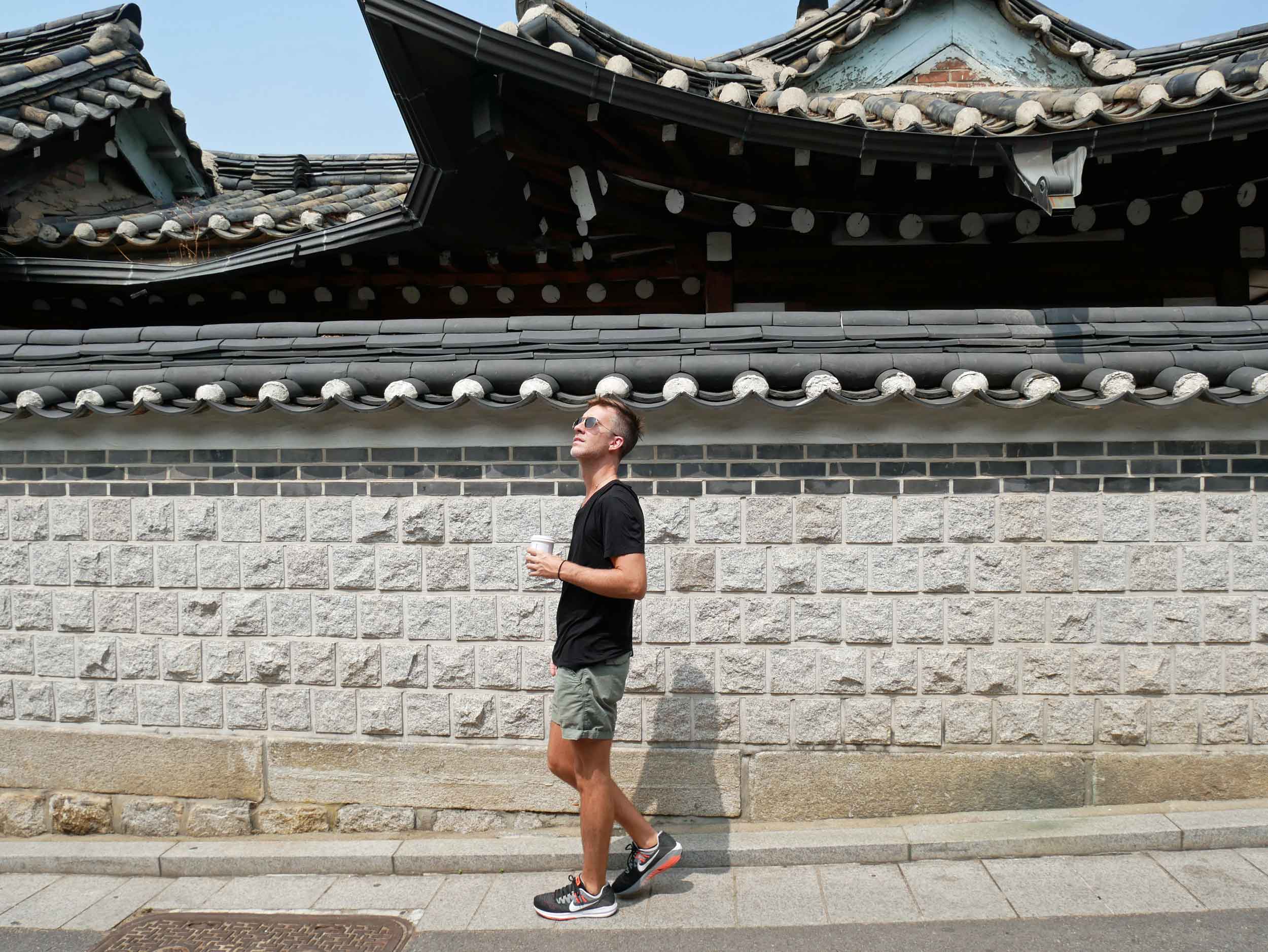
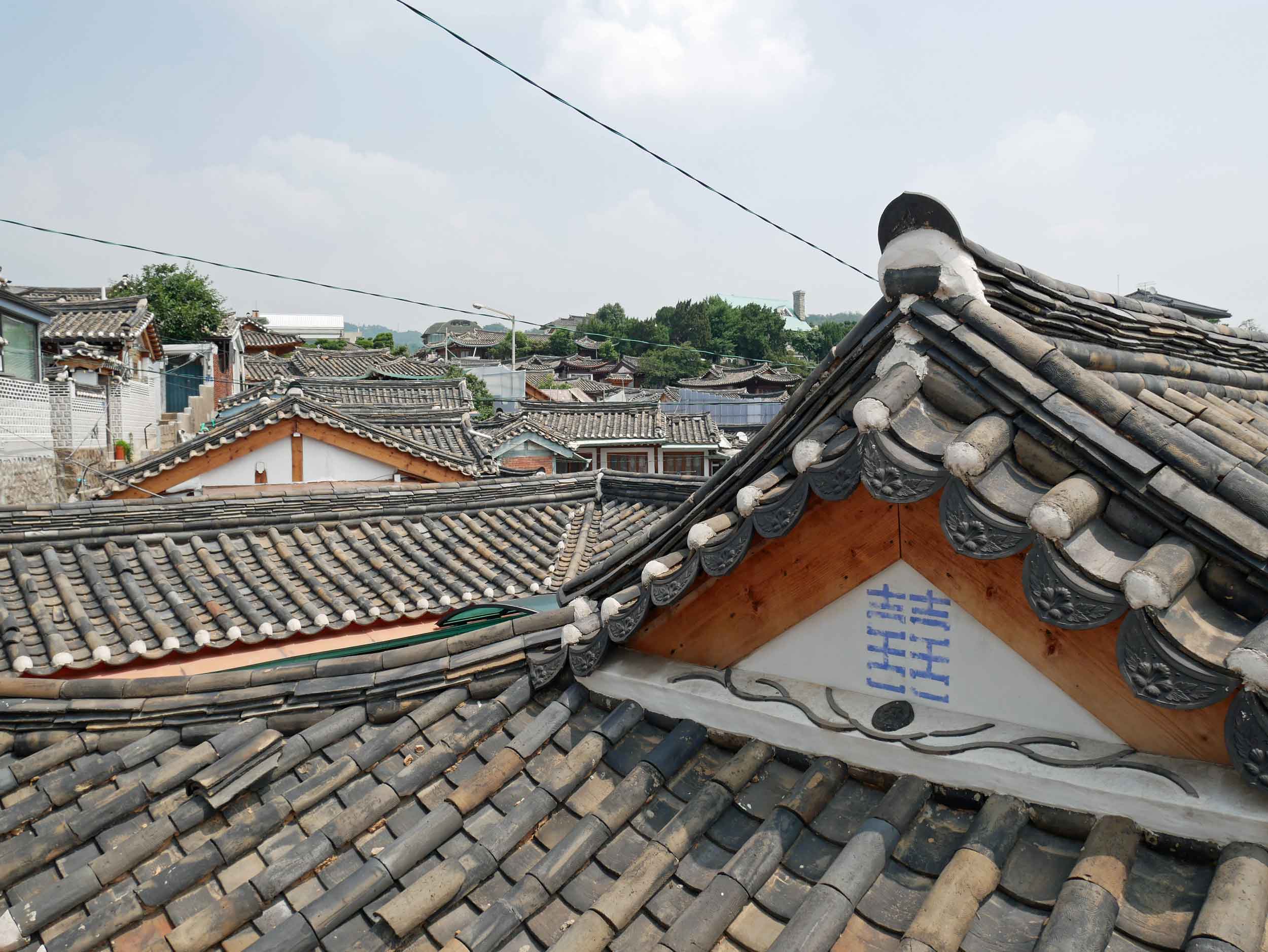
Admiring all of the history in Bukchon Hanok worked up an appetite, so we made our way to Wood & Brick organic restaurant (recommended by our lovely Airbnb host Kaitlyn) for some delicious salads and strong coffees. We liked it so much we came back for brunch the next day!
After our meal and a late morning rest, we made our way to the renowned Korean Temple Center to try our first taste of Korean temple food. One of the initial things we noticed upon entering the Michelin Guide restaurant Balwoo was the overall sense of peace and tranquility. While it is not positioned directly inside a temple, the restaurant enjoys a temple-like quality with a calm, quiet interior and beautifully simple and unadorned walls. Each party of diners is brought into their own private room, which offers a panoramic view of the city and is adorned with Buddhist sayings as a reminder of the purpose of the place. After being seated and ordering, we were provided a warm towel and encouraged to repeat the humble pre-meal offering, "Where has this food come from? I am ashamed to be eating it. I will take it as medicine to get rid of greed in my mind and to keep my physical being in order to achieve enlightenment."
Our lunch was elegant in its simplicity, presentation and honoring of the Buddhist principles of non-violence, non-waste and local and seasonal eating. These practices, which have a very long history in Buddhist tradition, are so relevant and timely today.

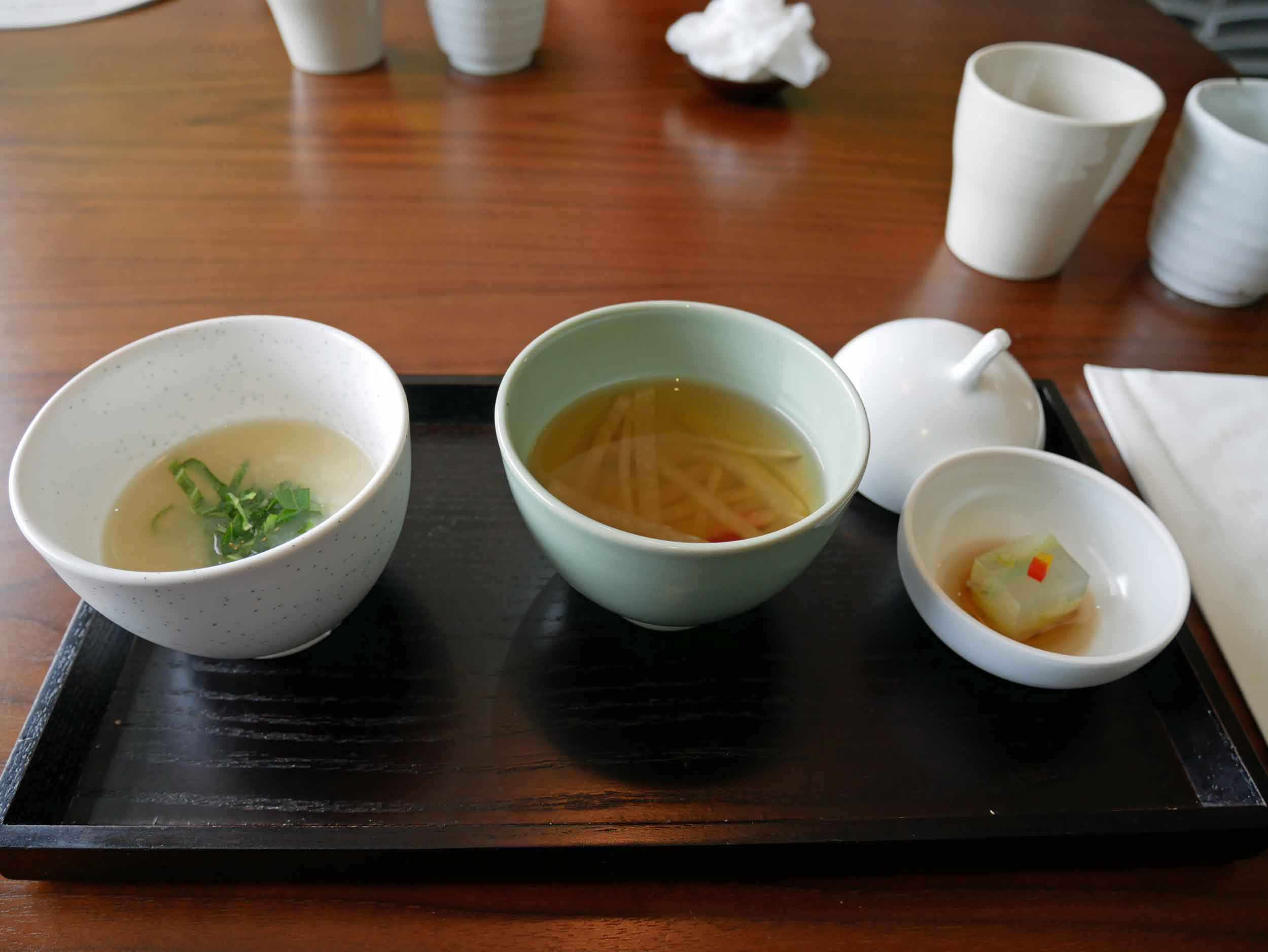
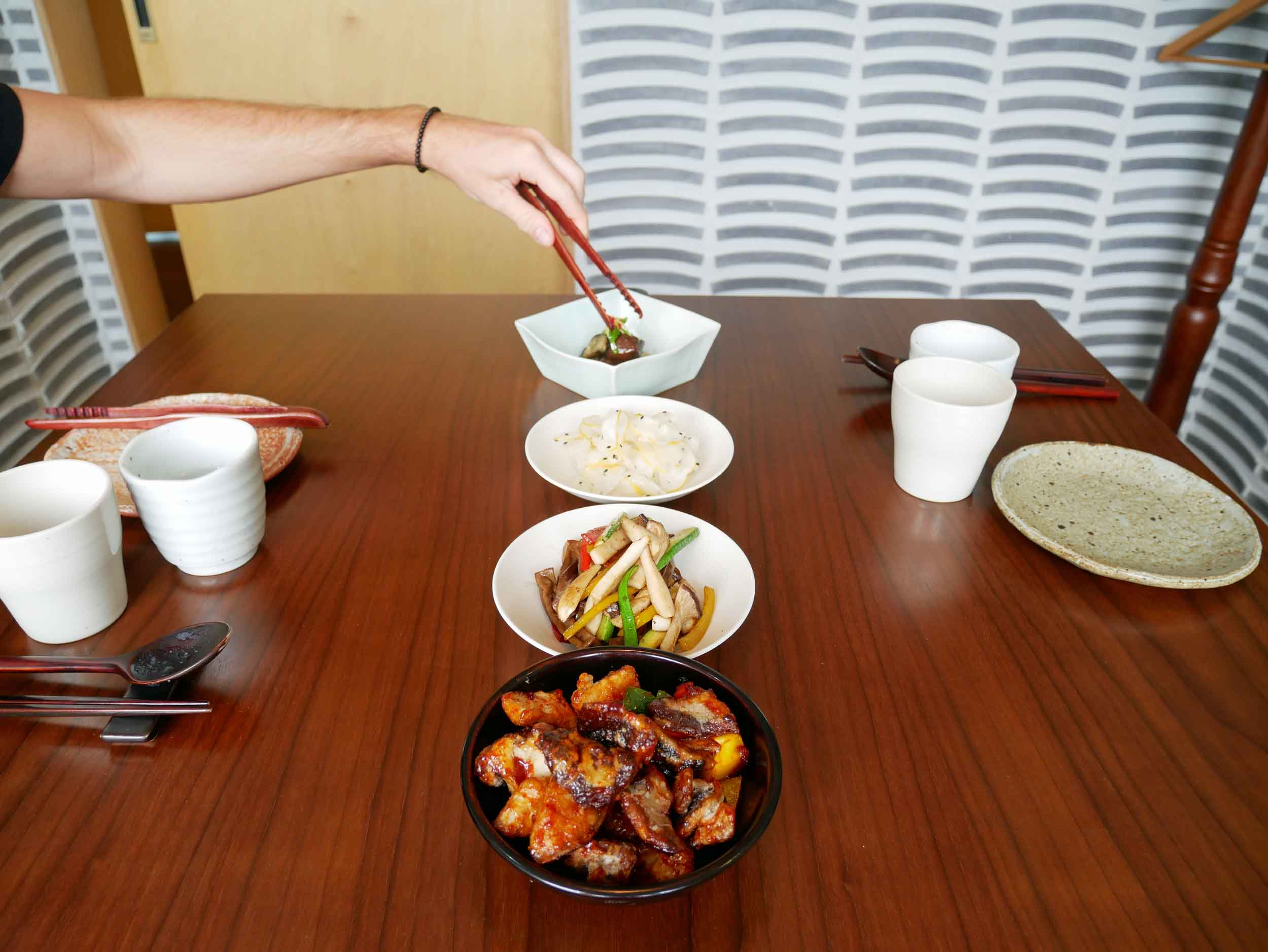
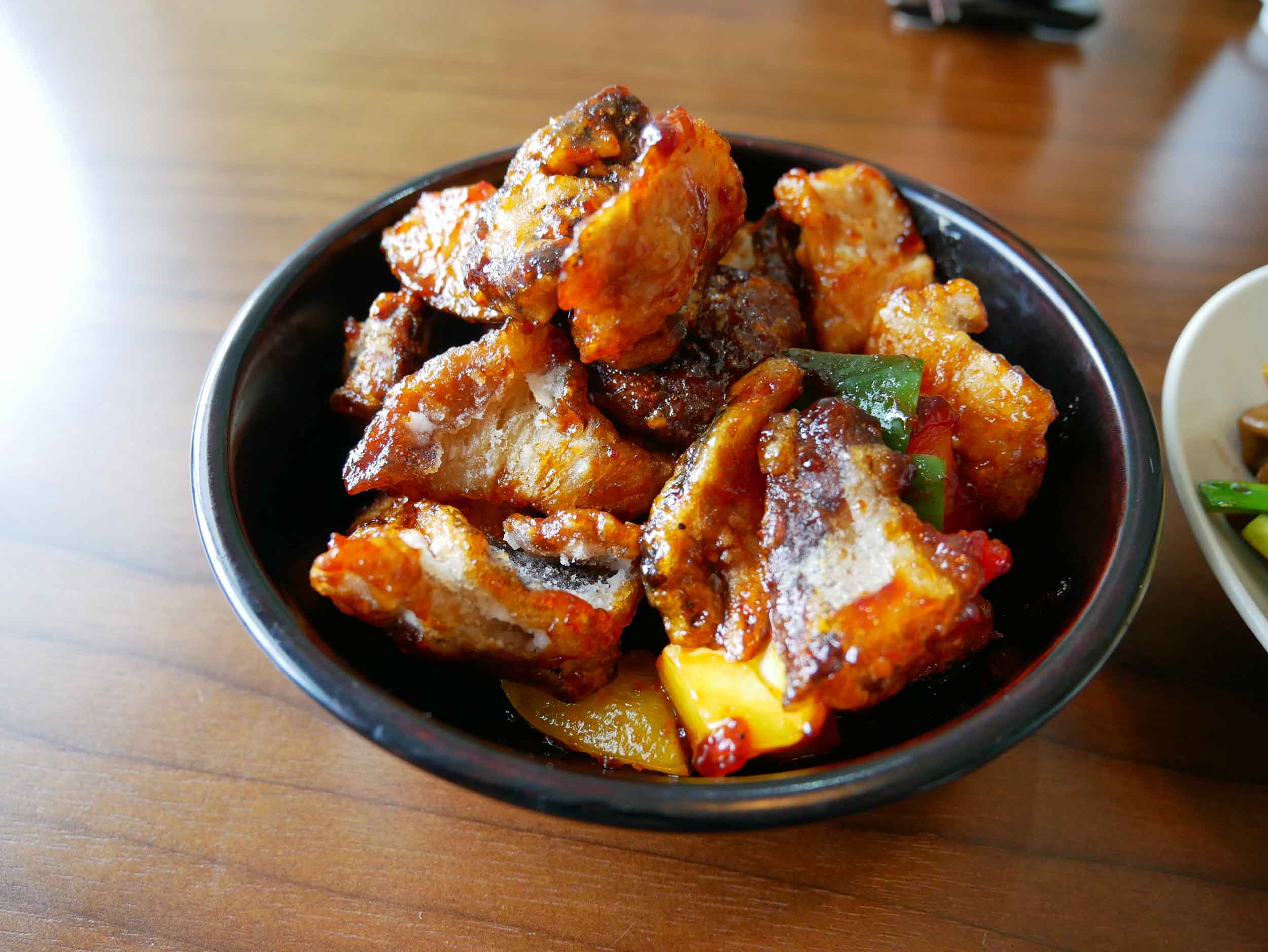
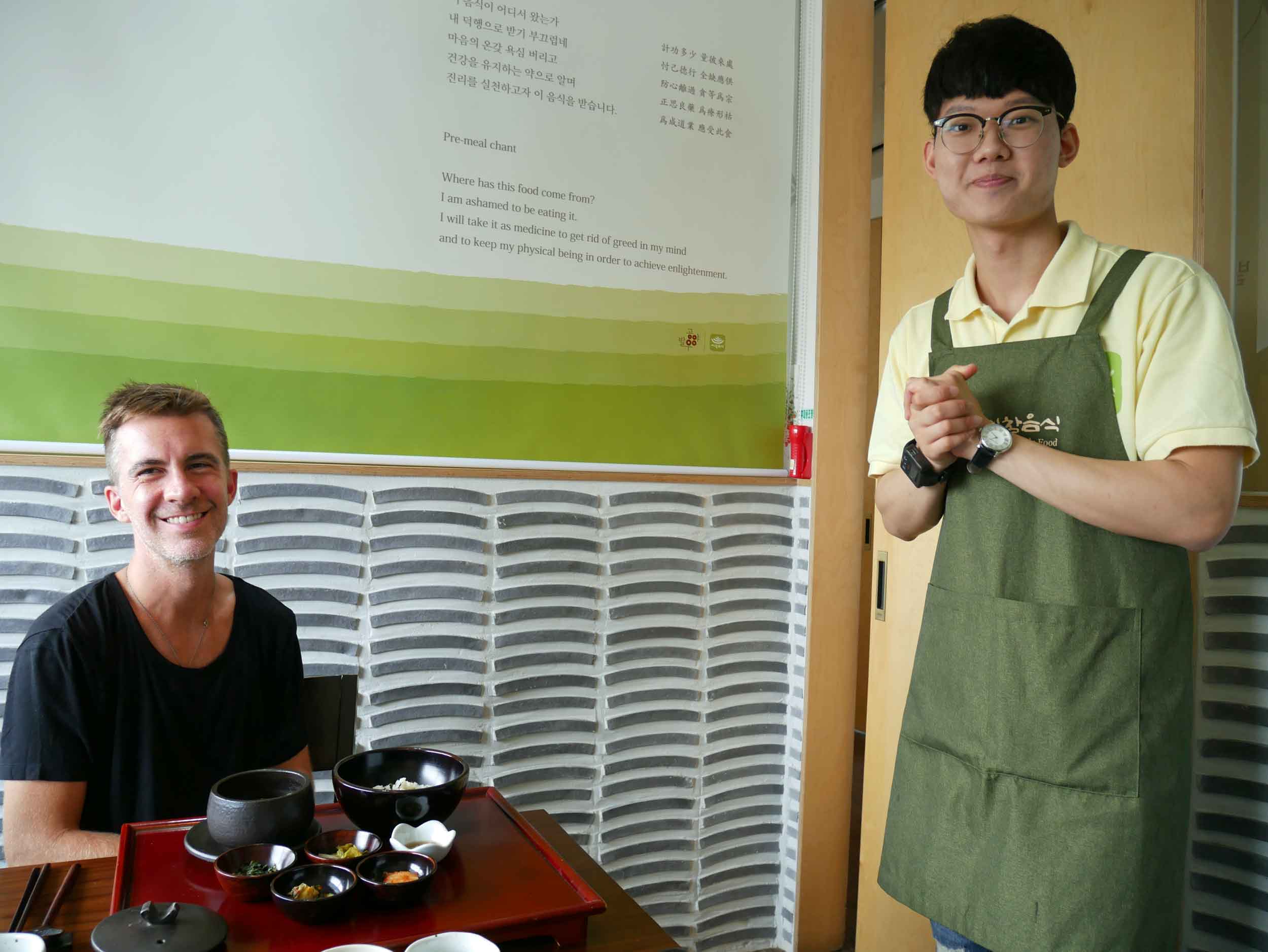
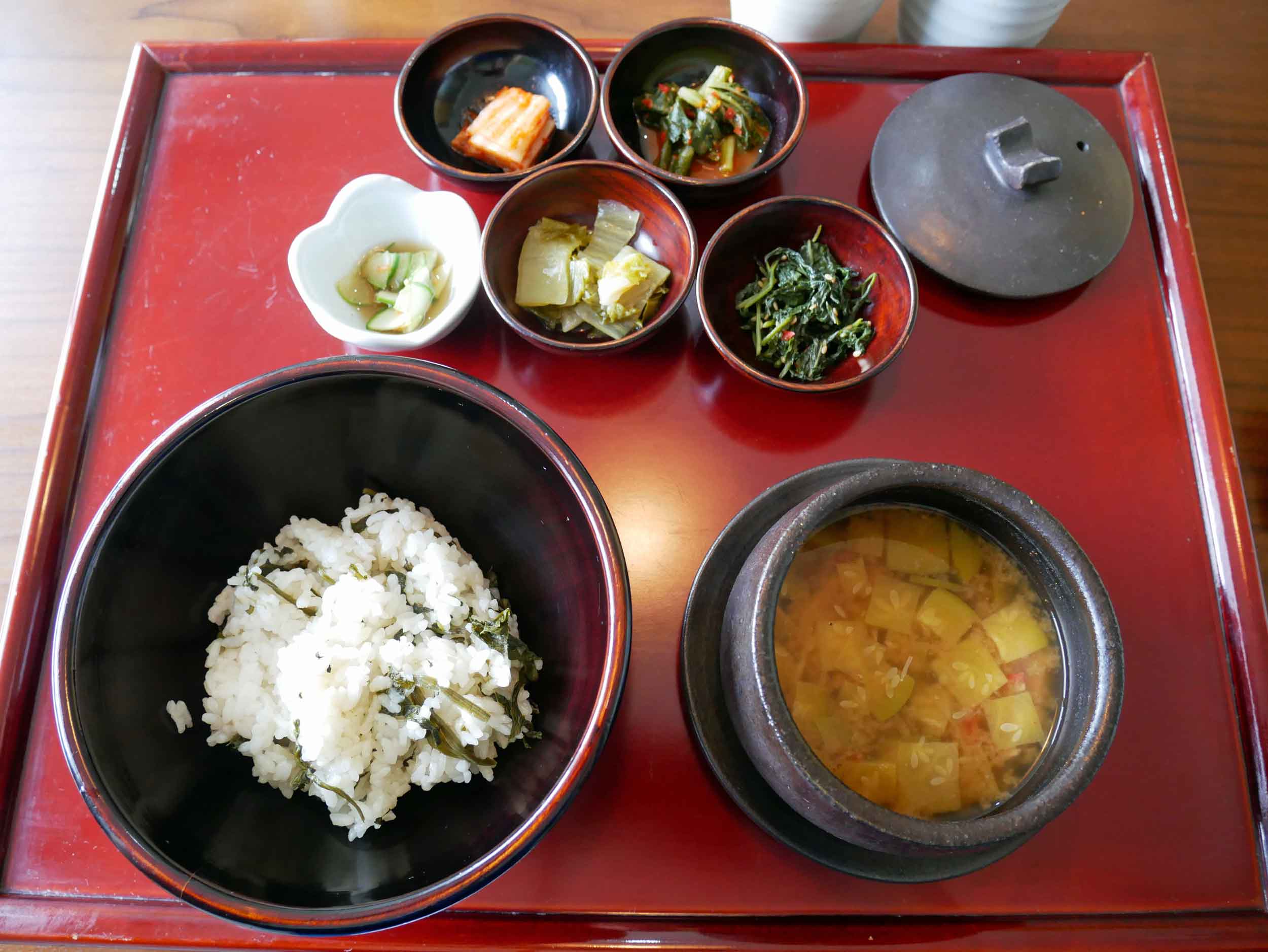
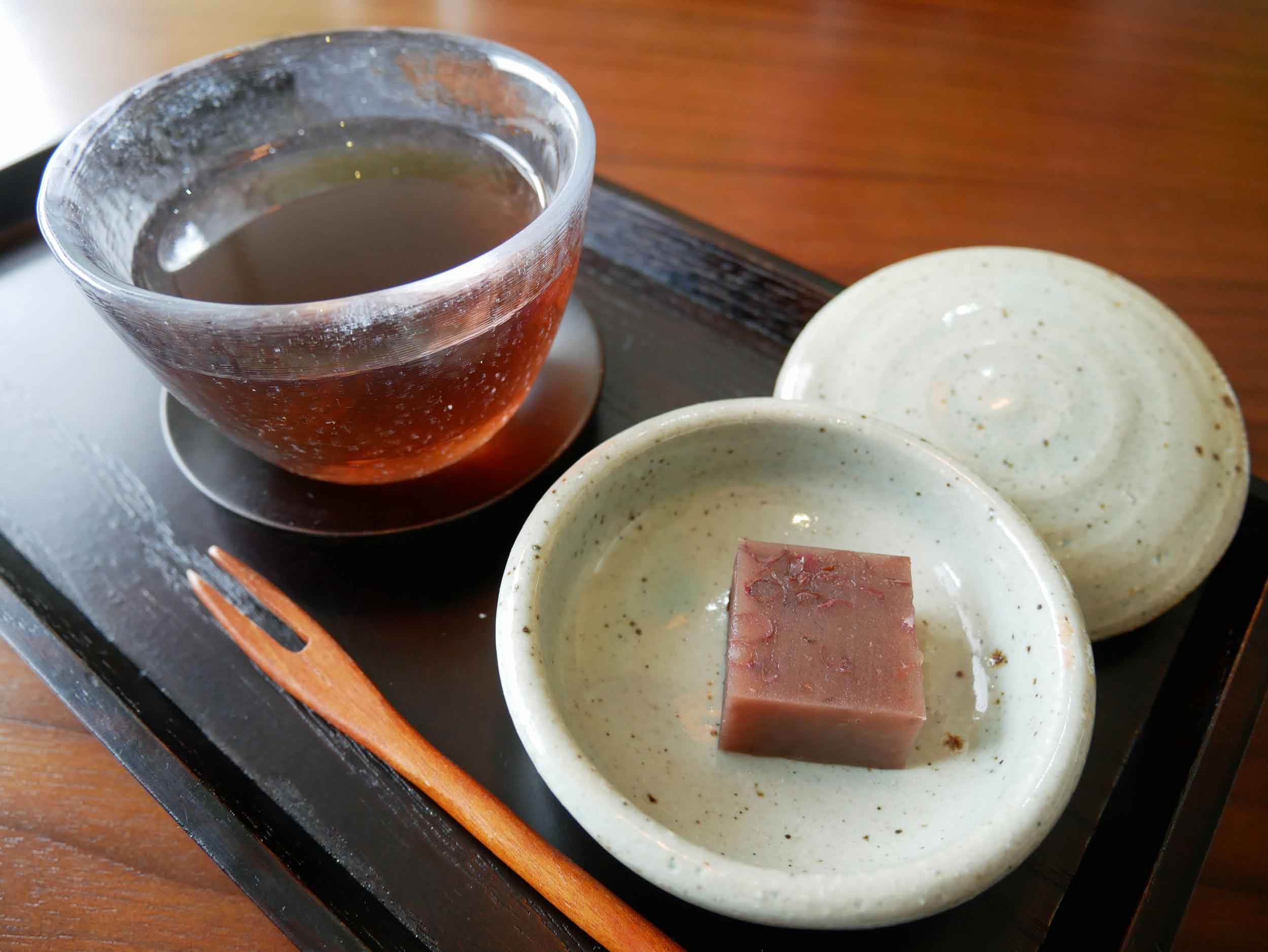
After lunch, we visited neighboring Jogyesa Temple, the perfect way to digest both literally and figuratively our meal and our spiritual dining experience. Here, we learned of an outdoor classical concert to be held on the temple grounds the next evening as well as a temple food cooking class the following day, and so, we left excited by the promise of spending more time in the presence of such calm and beauty while in this city.
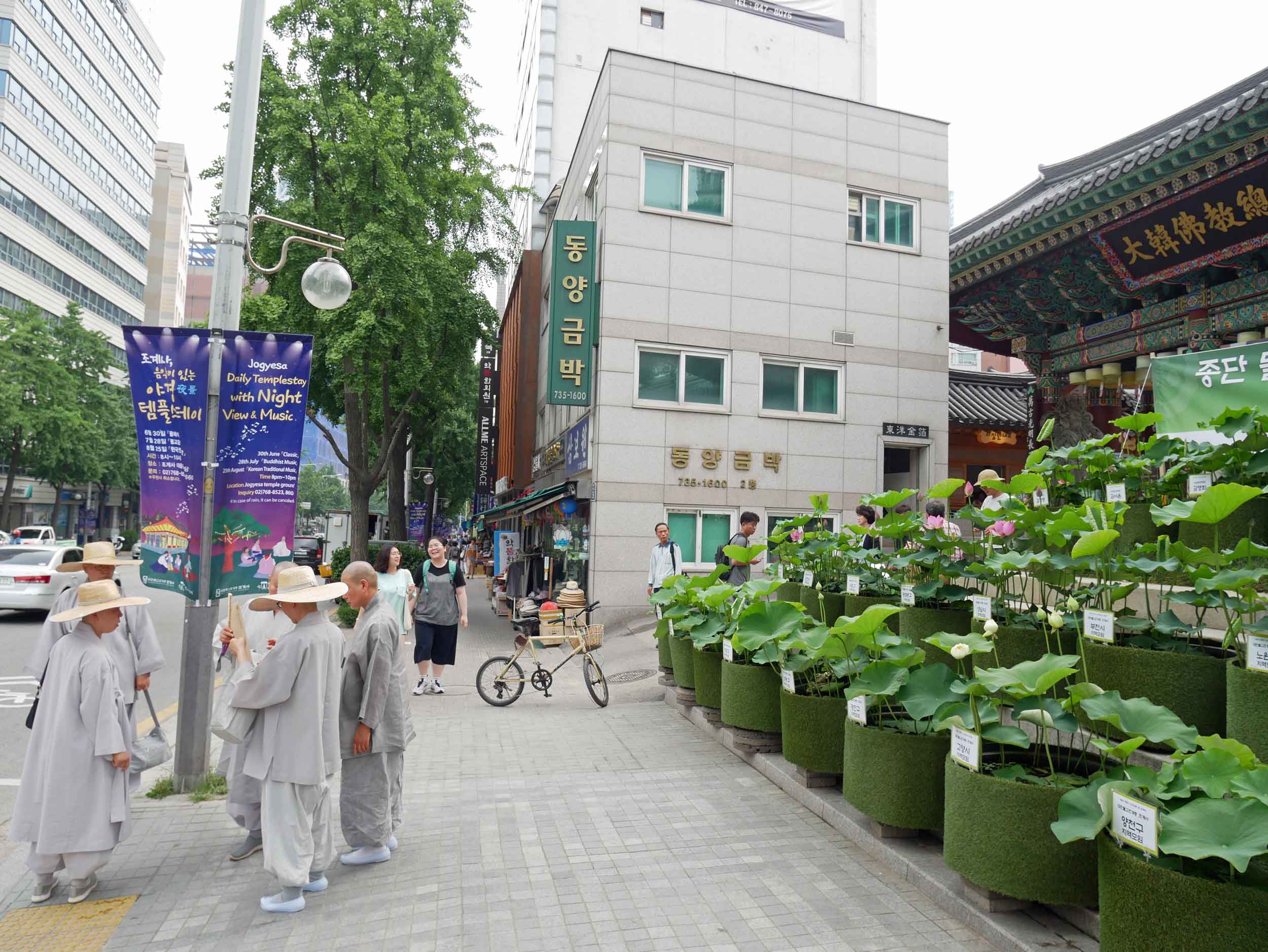
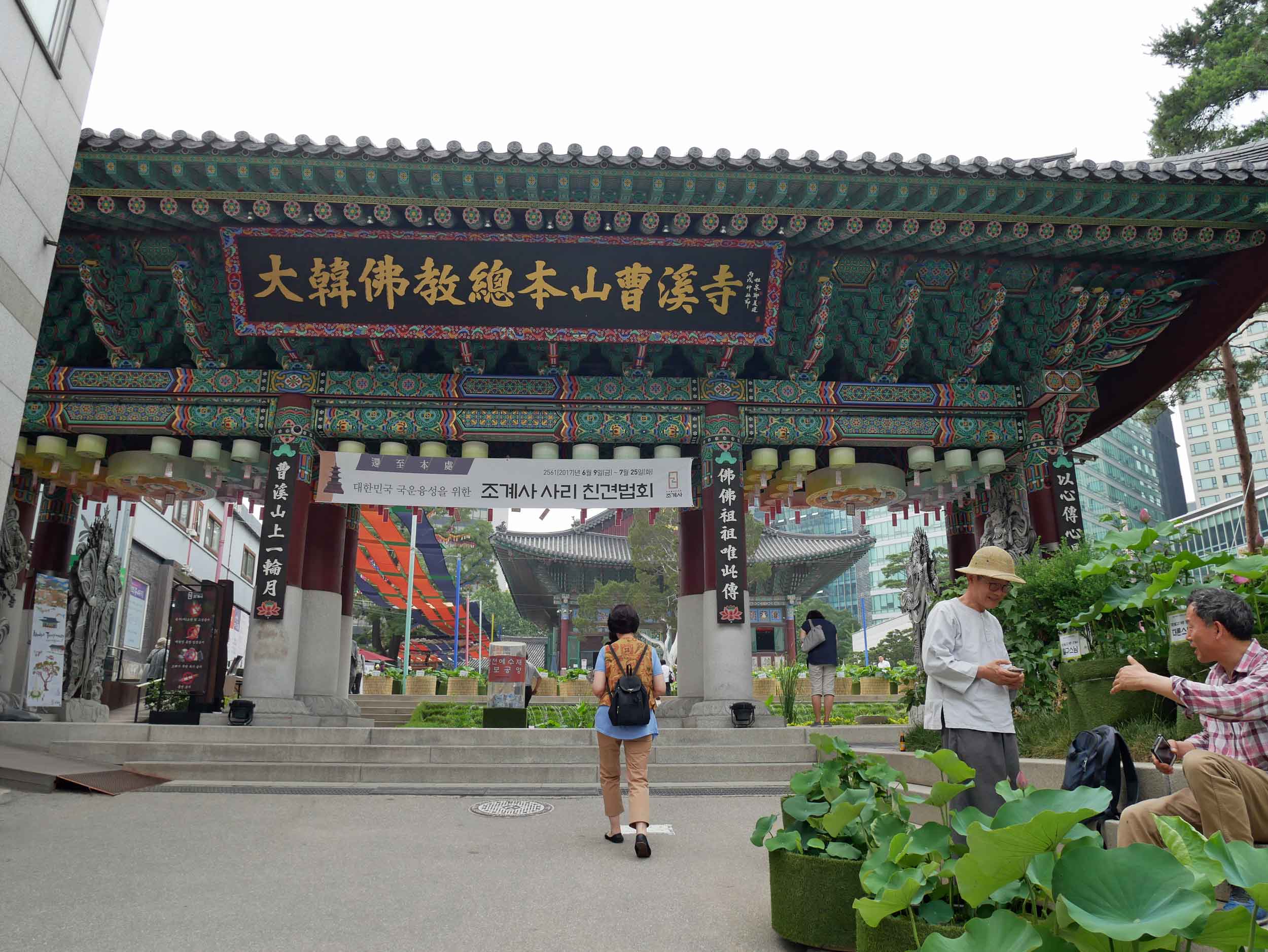



As the sun began to set on our first full day in Seoul, we made our way to Gwangjang Market to try some of Korea's famed street food, including bindae-tteok (mung bean pancake), gimbap (seaweed rice rolls), japchae (Korean glass noodle stir fry). Full and happy, we made our way to the futuristic Dongdaemun Design Plaza (DDP) to enjoy the ethereal masterpiece of the late Iraqi-British architect Zaha Hadid.
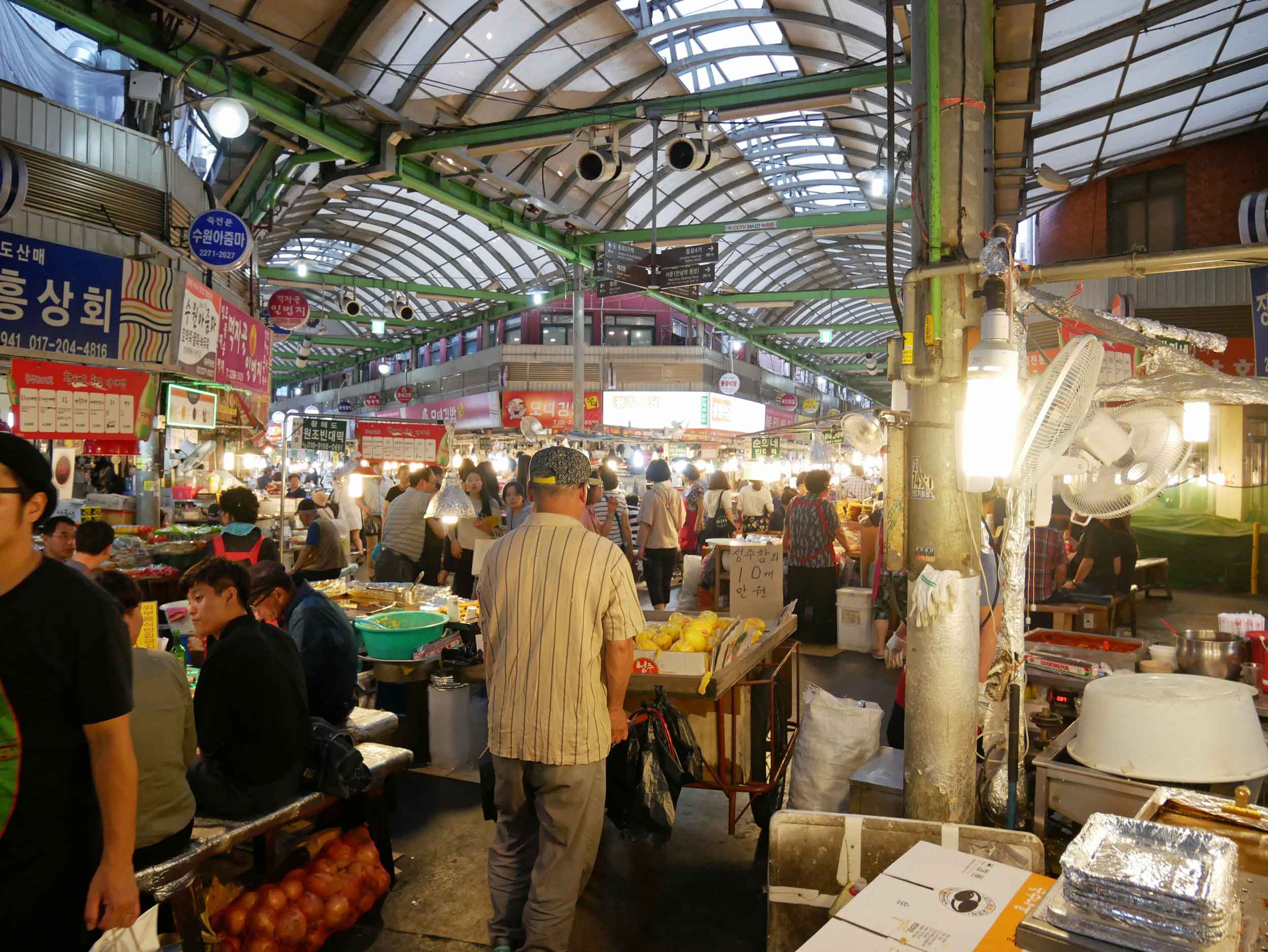
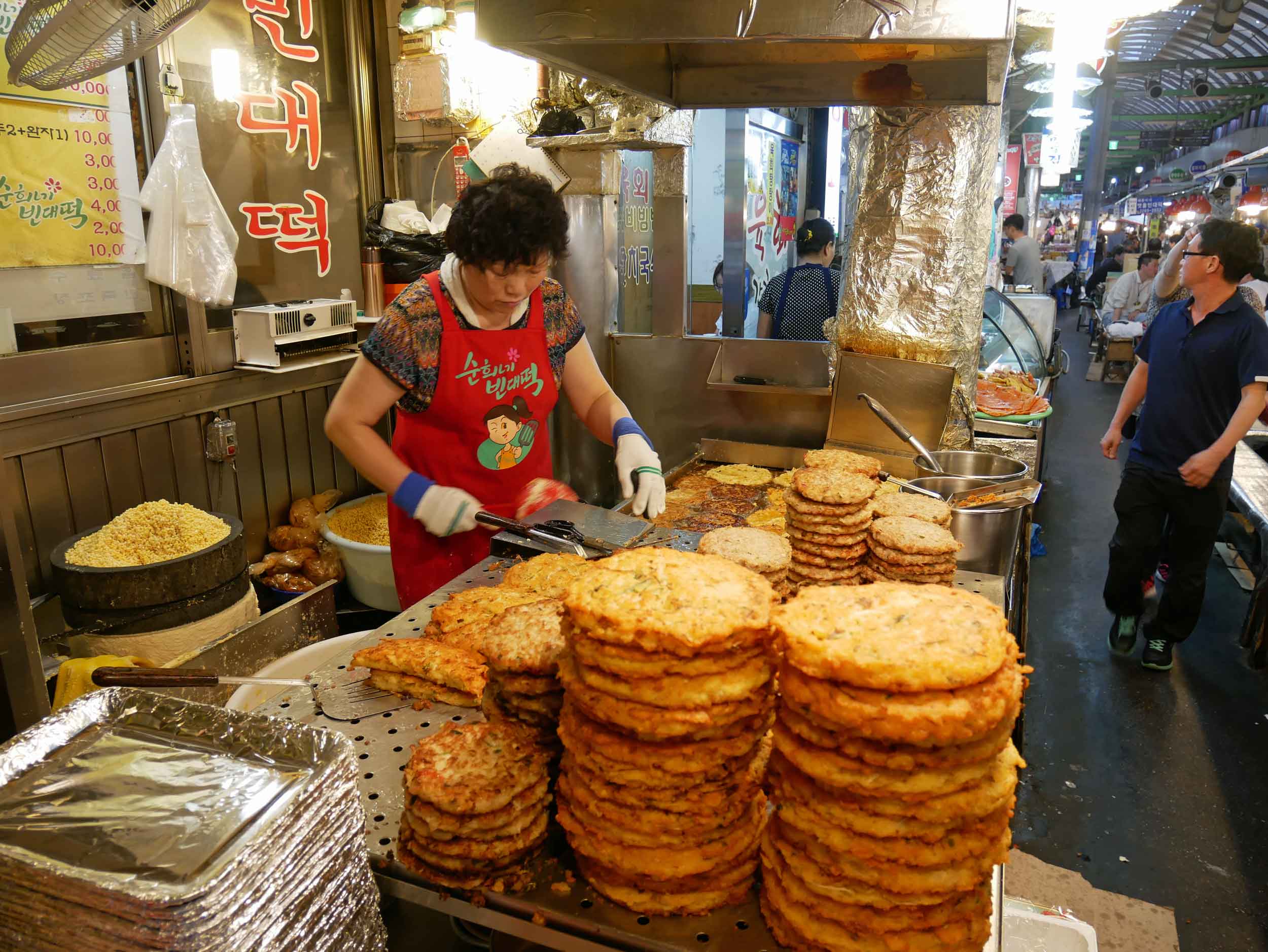
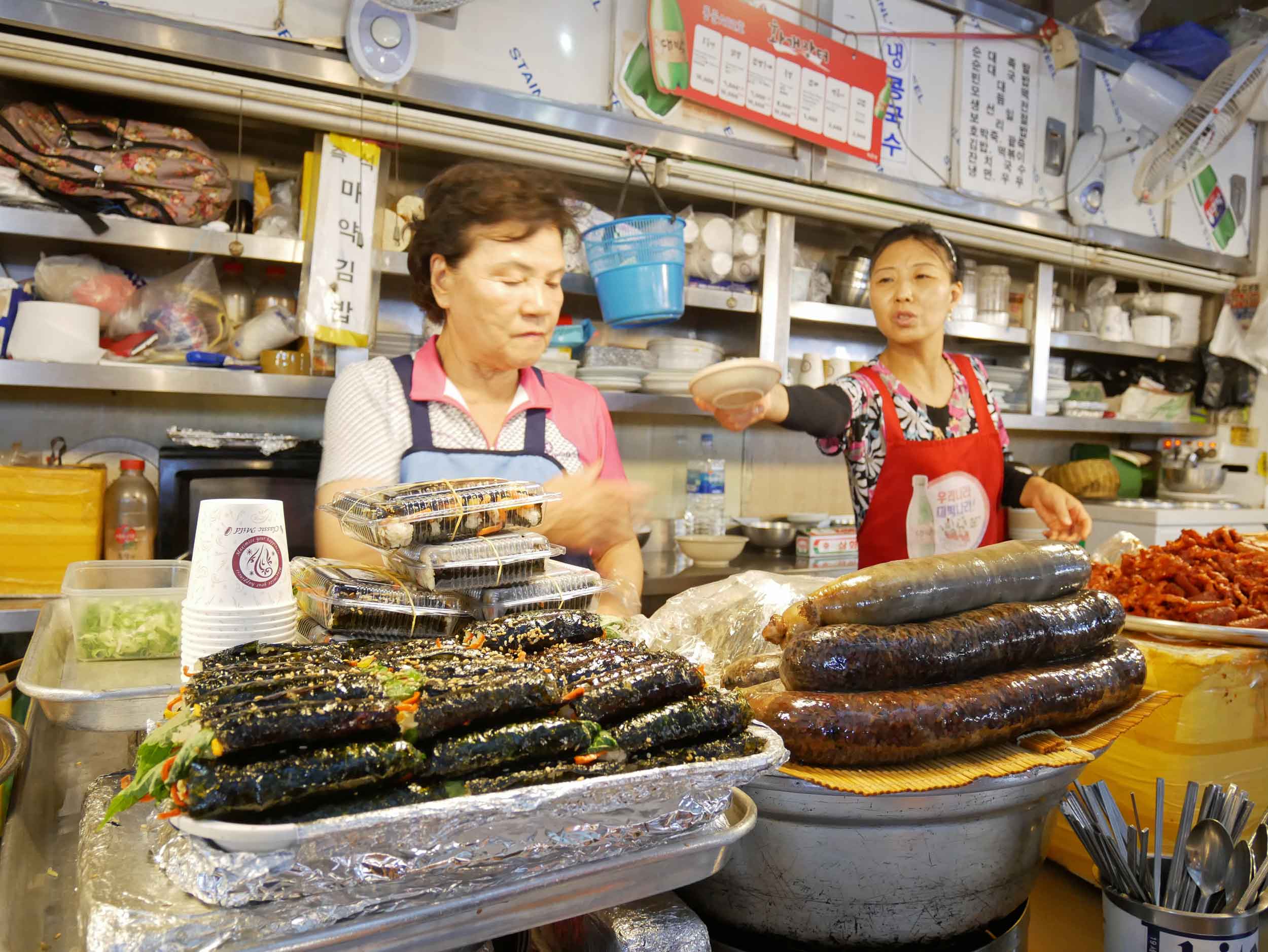
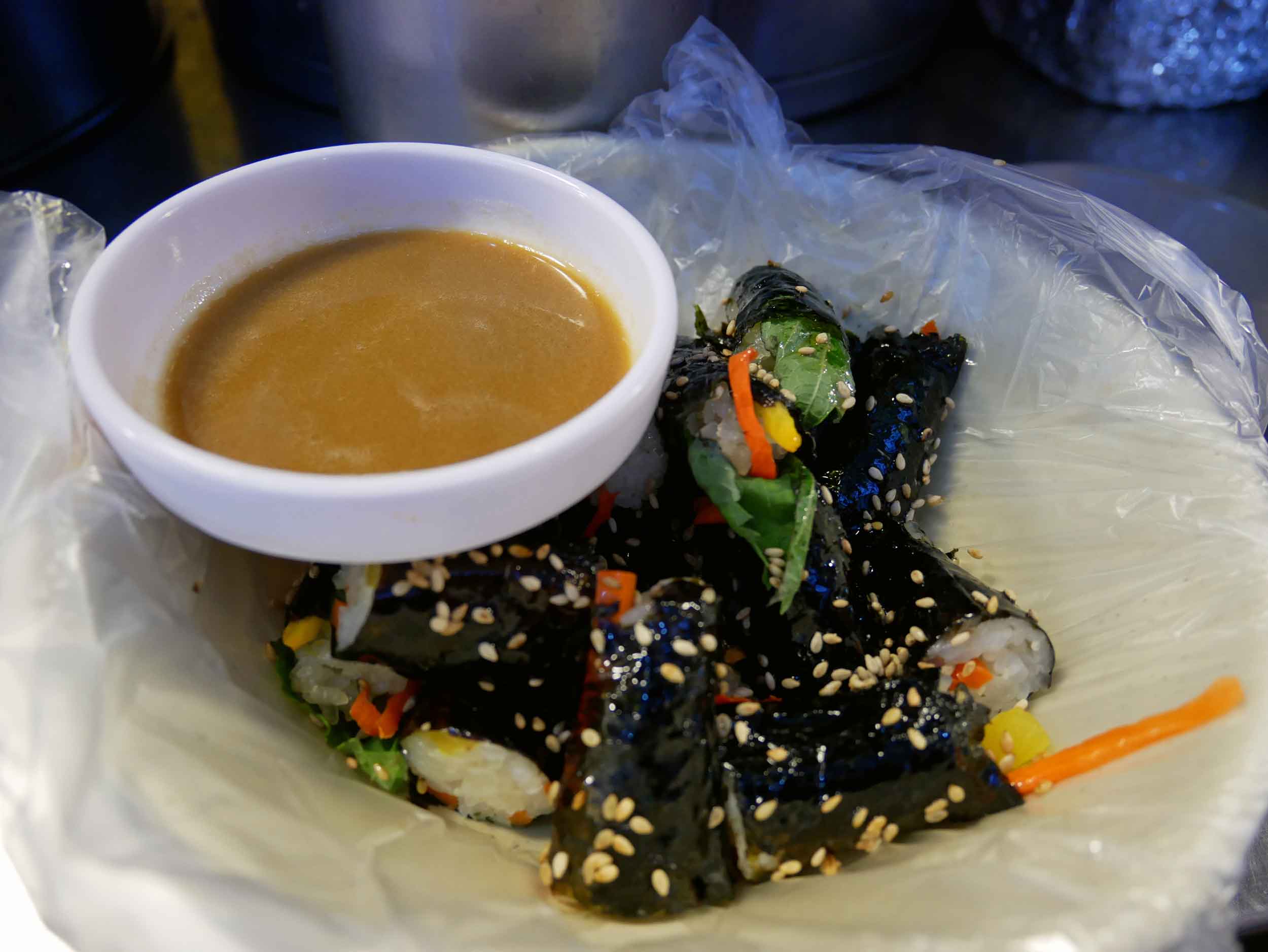
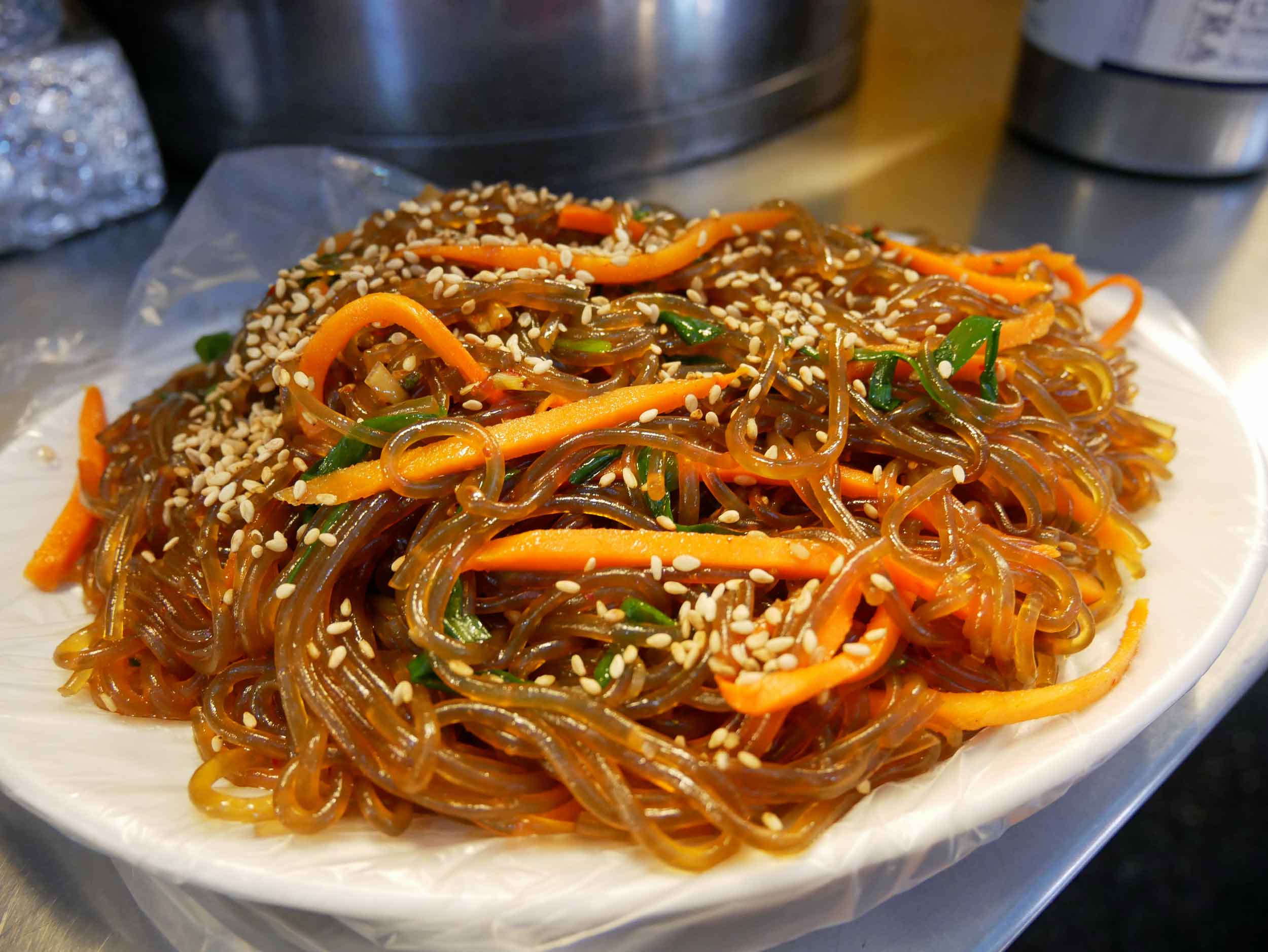
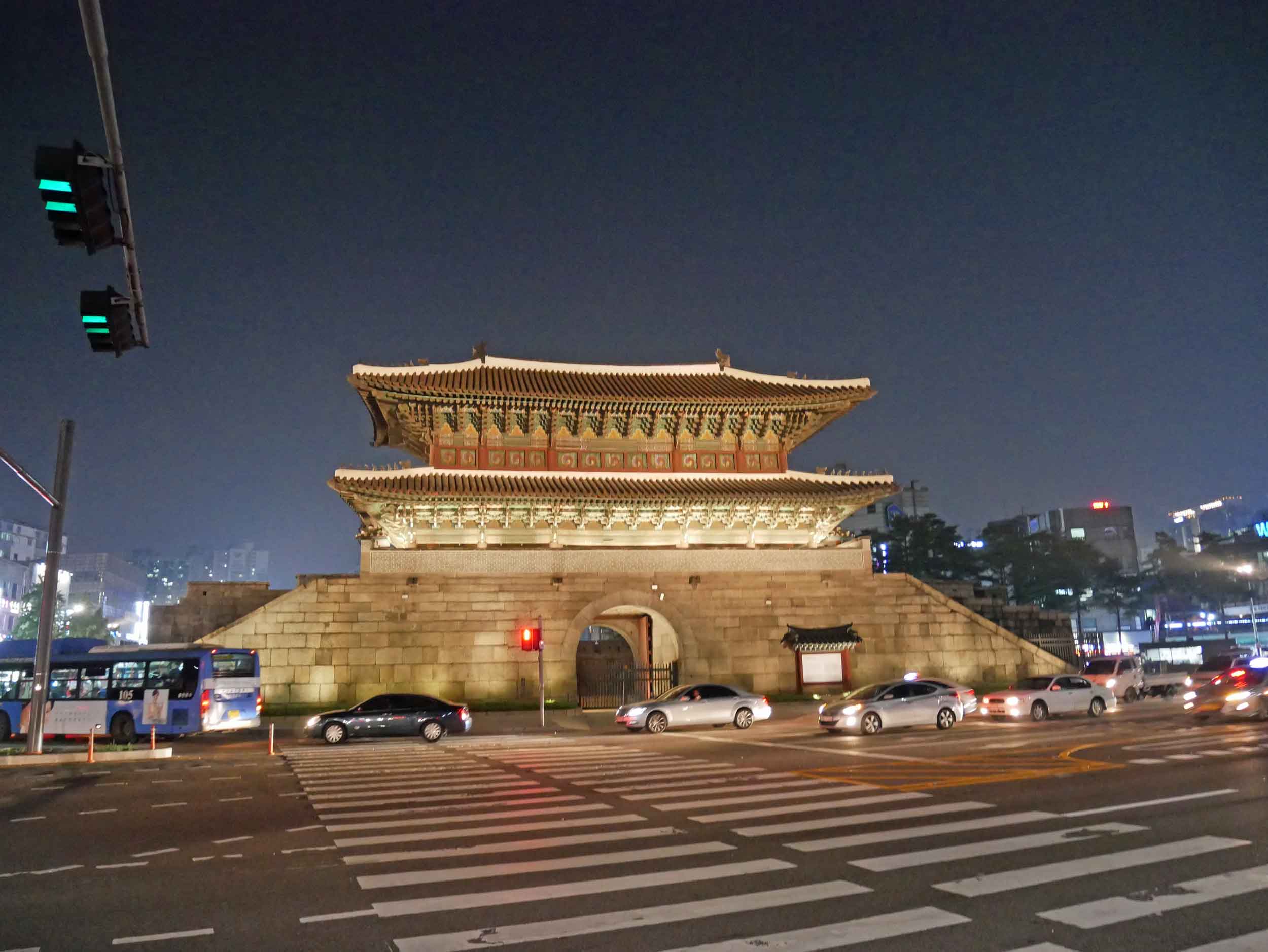
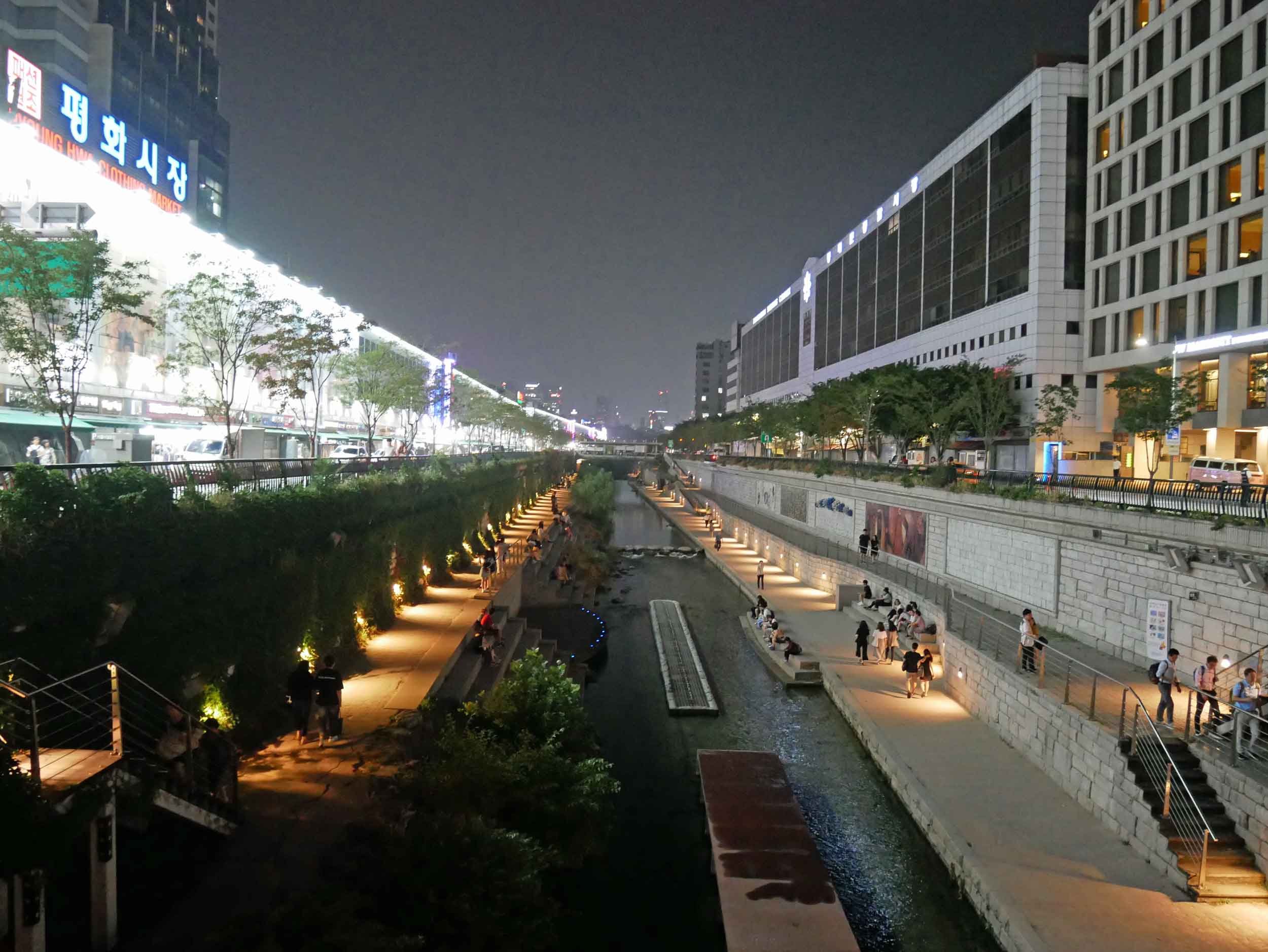
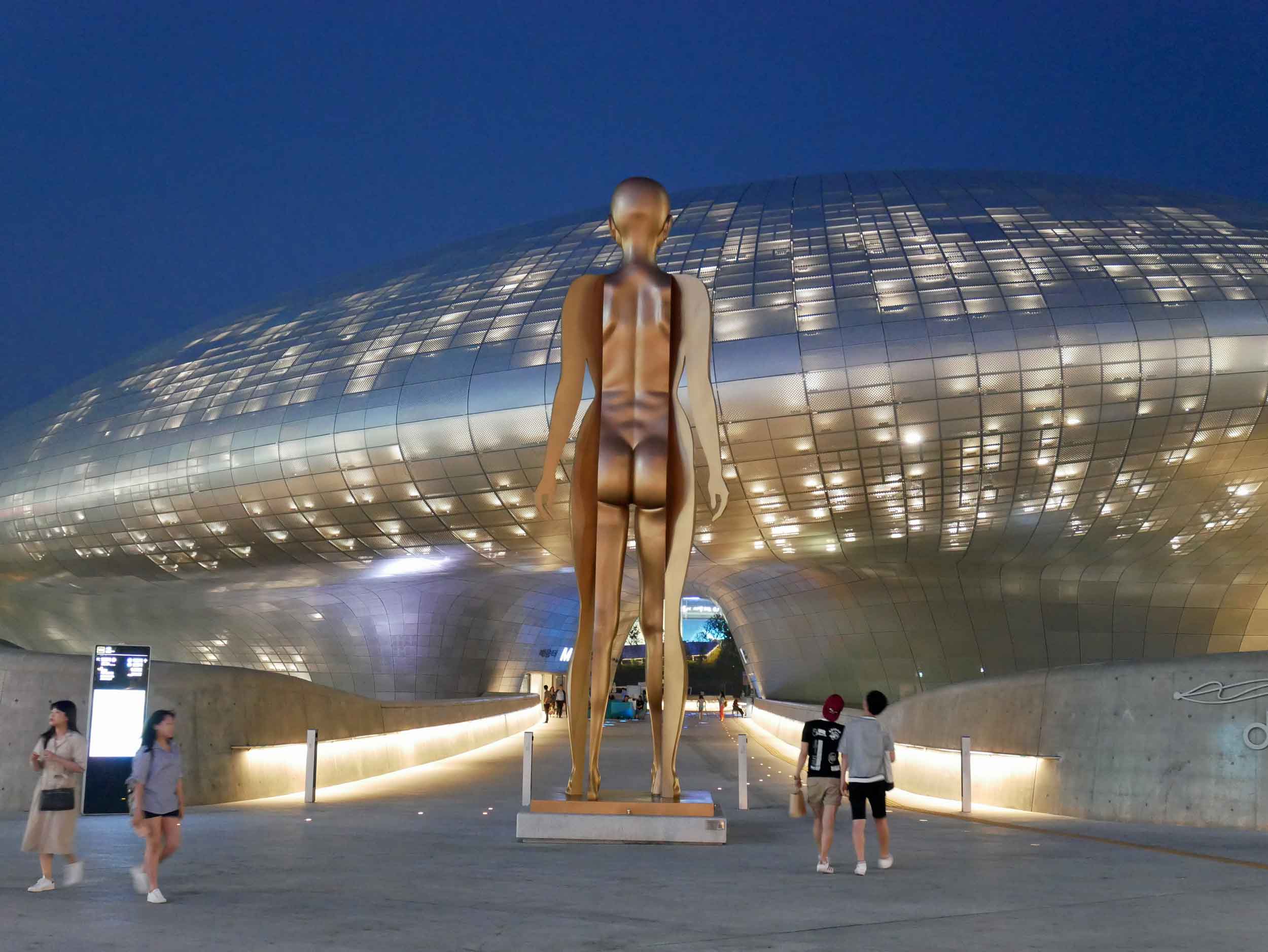
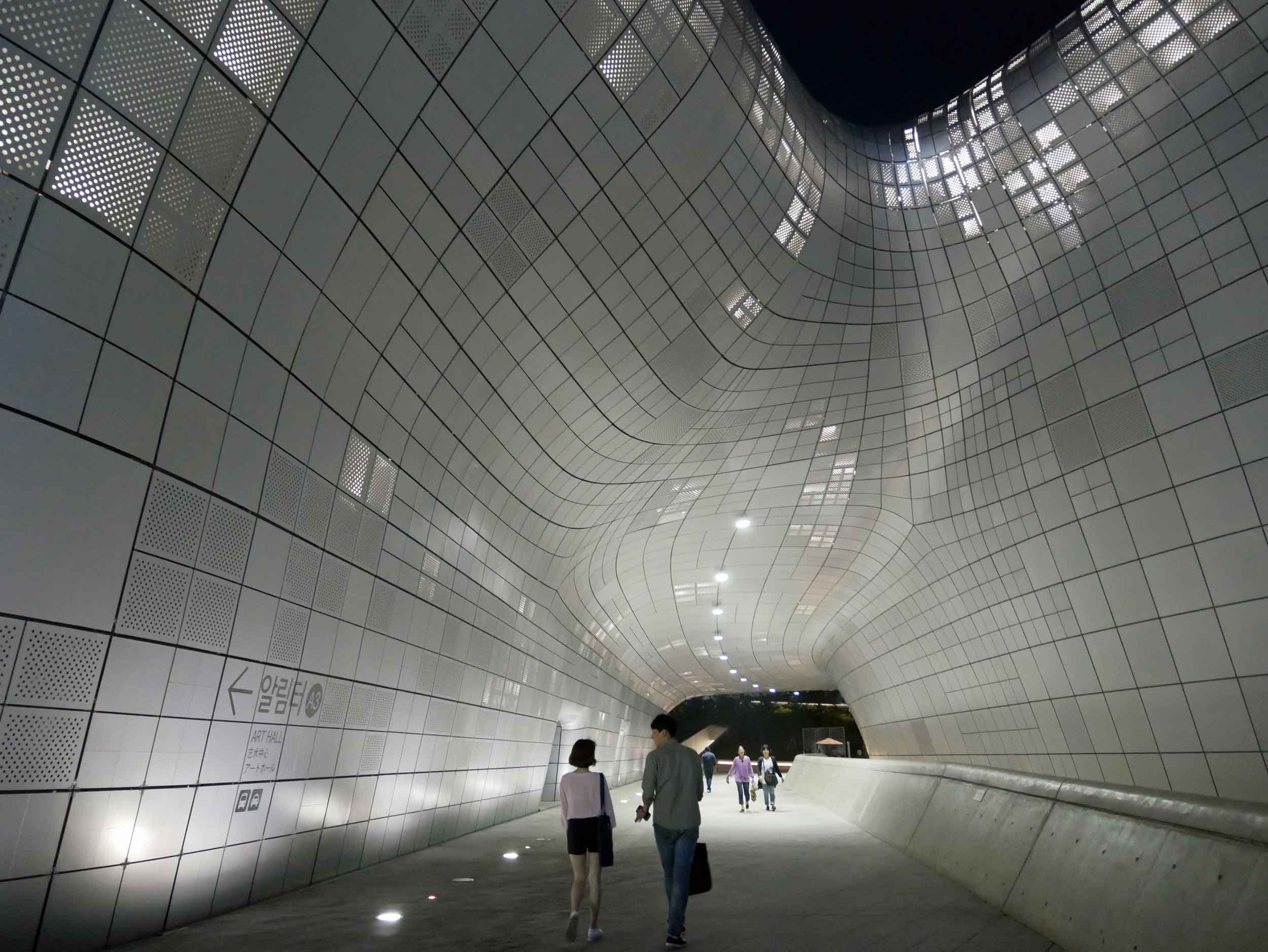
The next morning, we made an early start at the Gyeongbokgung Palace to take in the 14th century history of the main royal palace of the Joseon dynasty (soon overtaken with folks in traditional Korean costume for the timeless photo op). After a quick brunch back at Wood & Brick, we made our way to the traveling Louis Vuitton "Volez, Voguez, Voyagez" exhibition at the DDP, which was just as magnificent in the daytime.
After a dinner of Korean dumplings, we strolled the quirky Ssamziegil Craft Market before making our way to Jogyesa Temple for the outdoor concert and capping the evening with a traditional Korean mango shaved ice dessert.
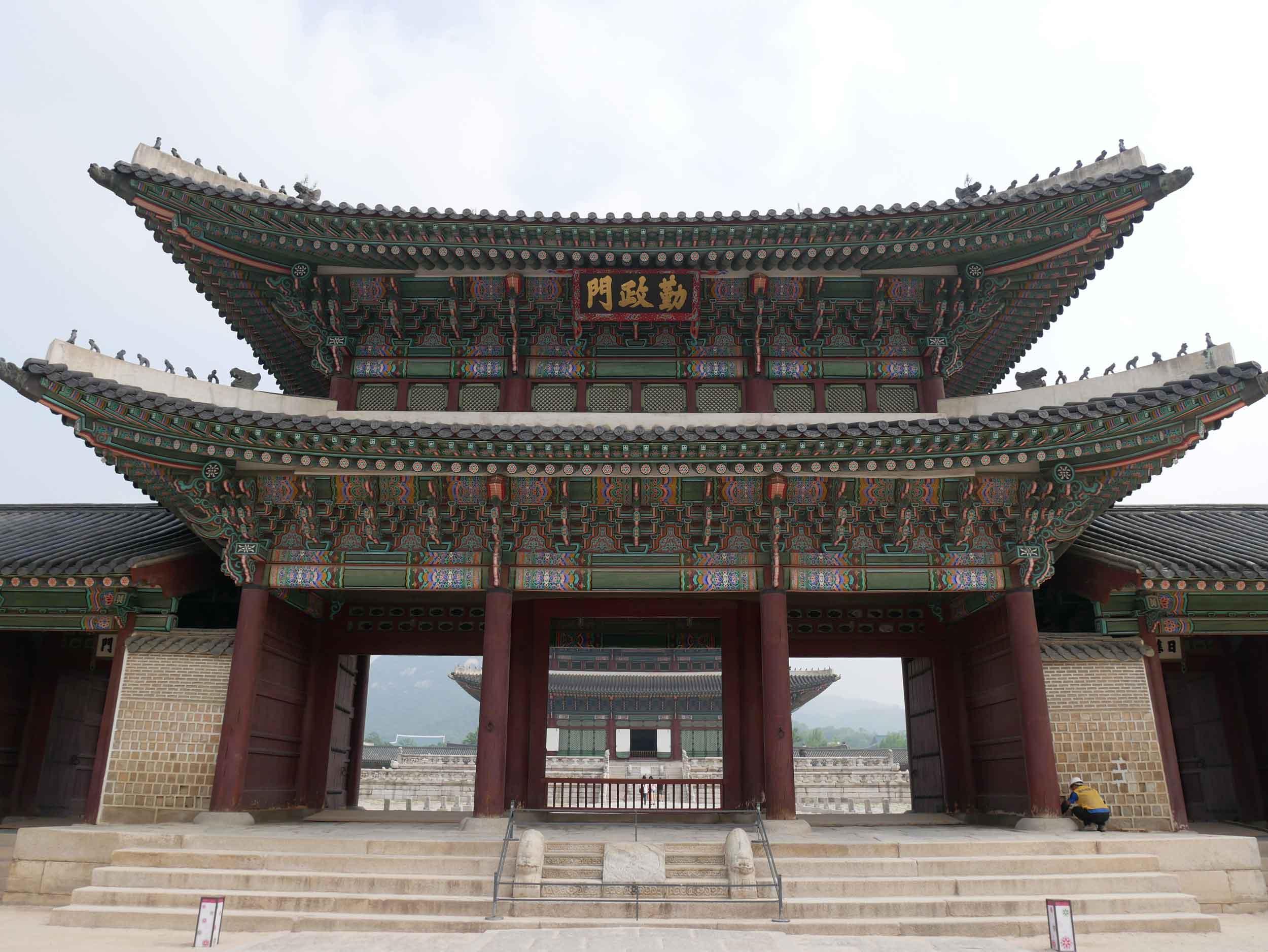
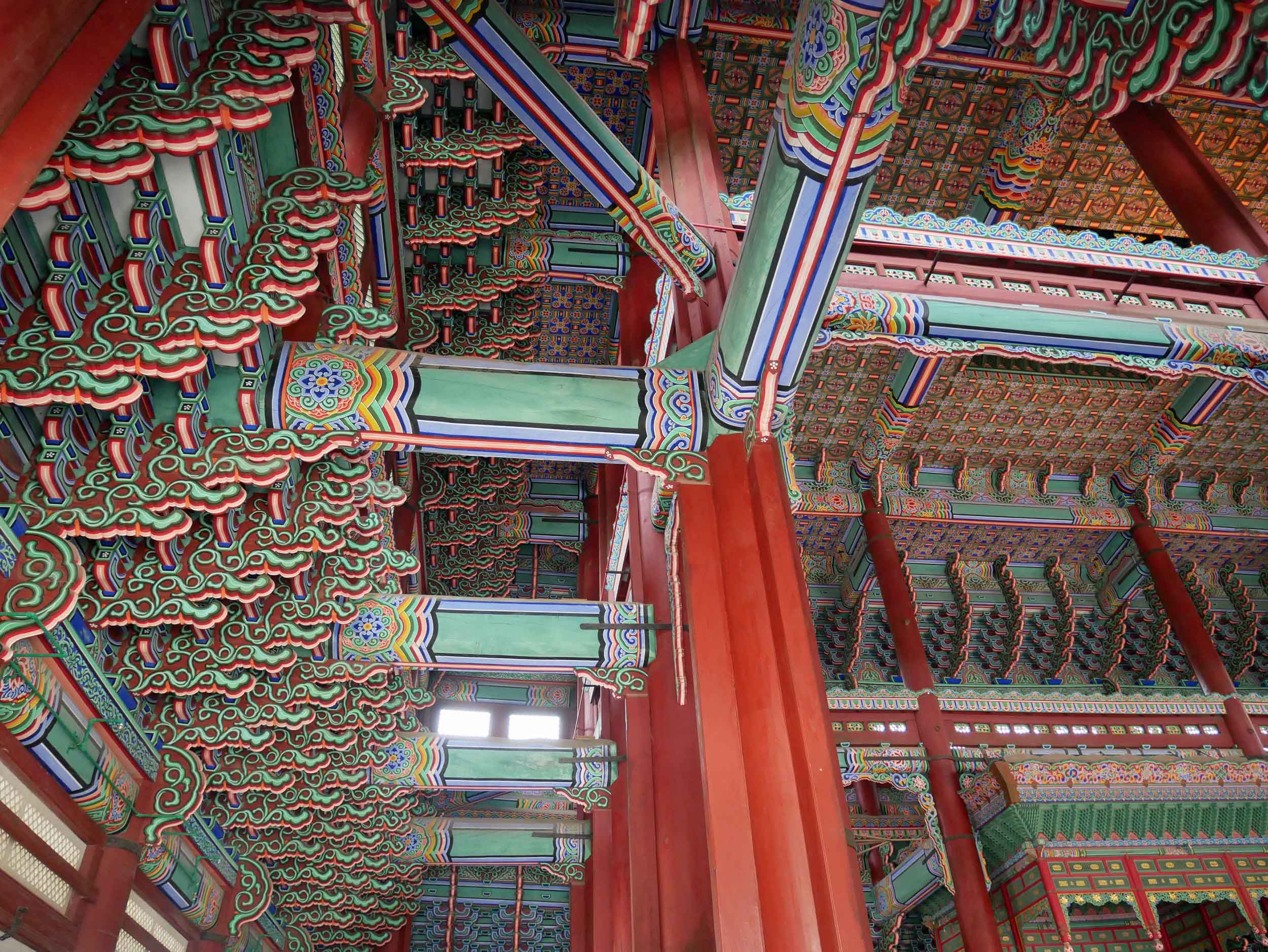
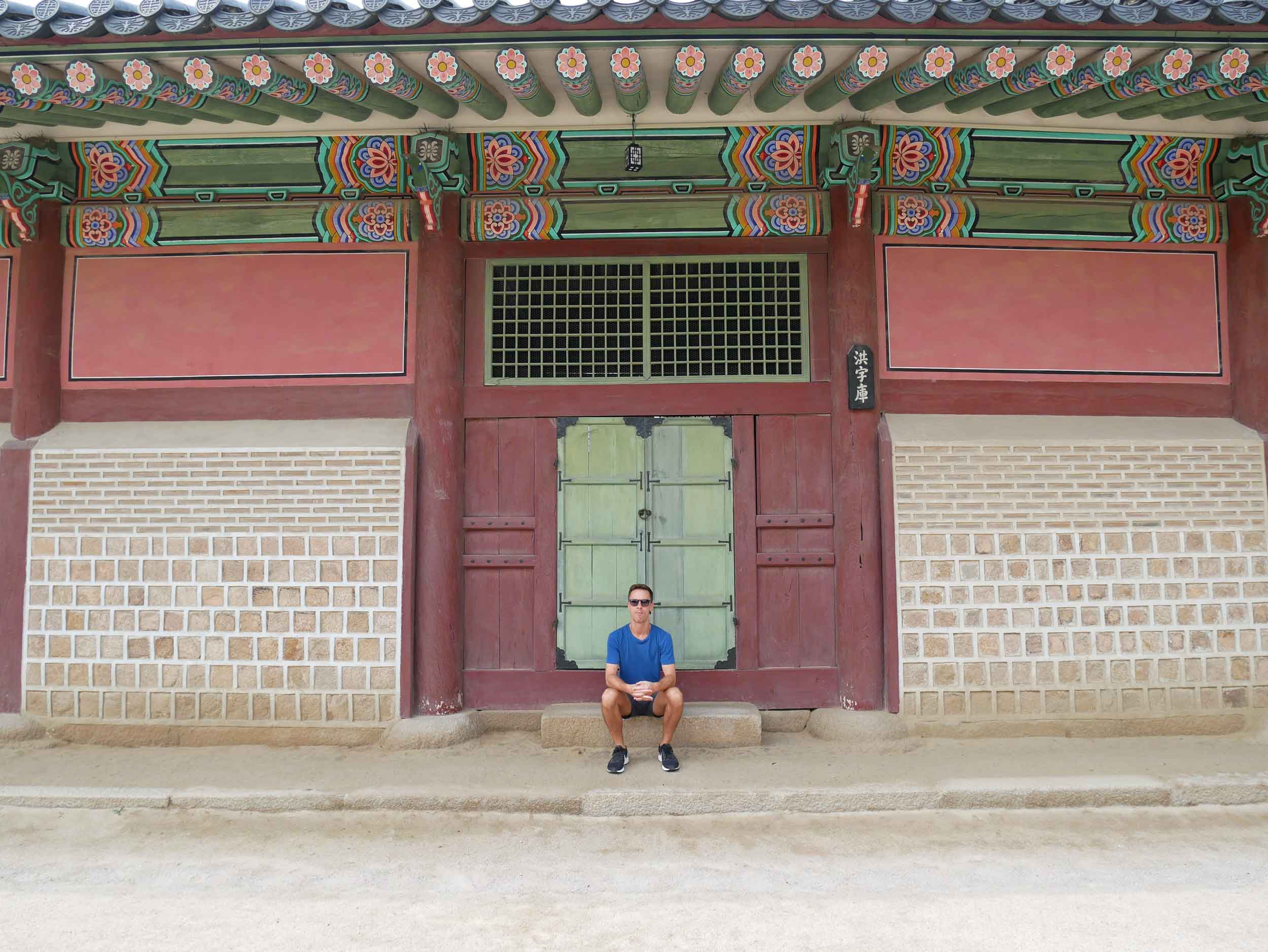
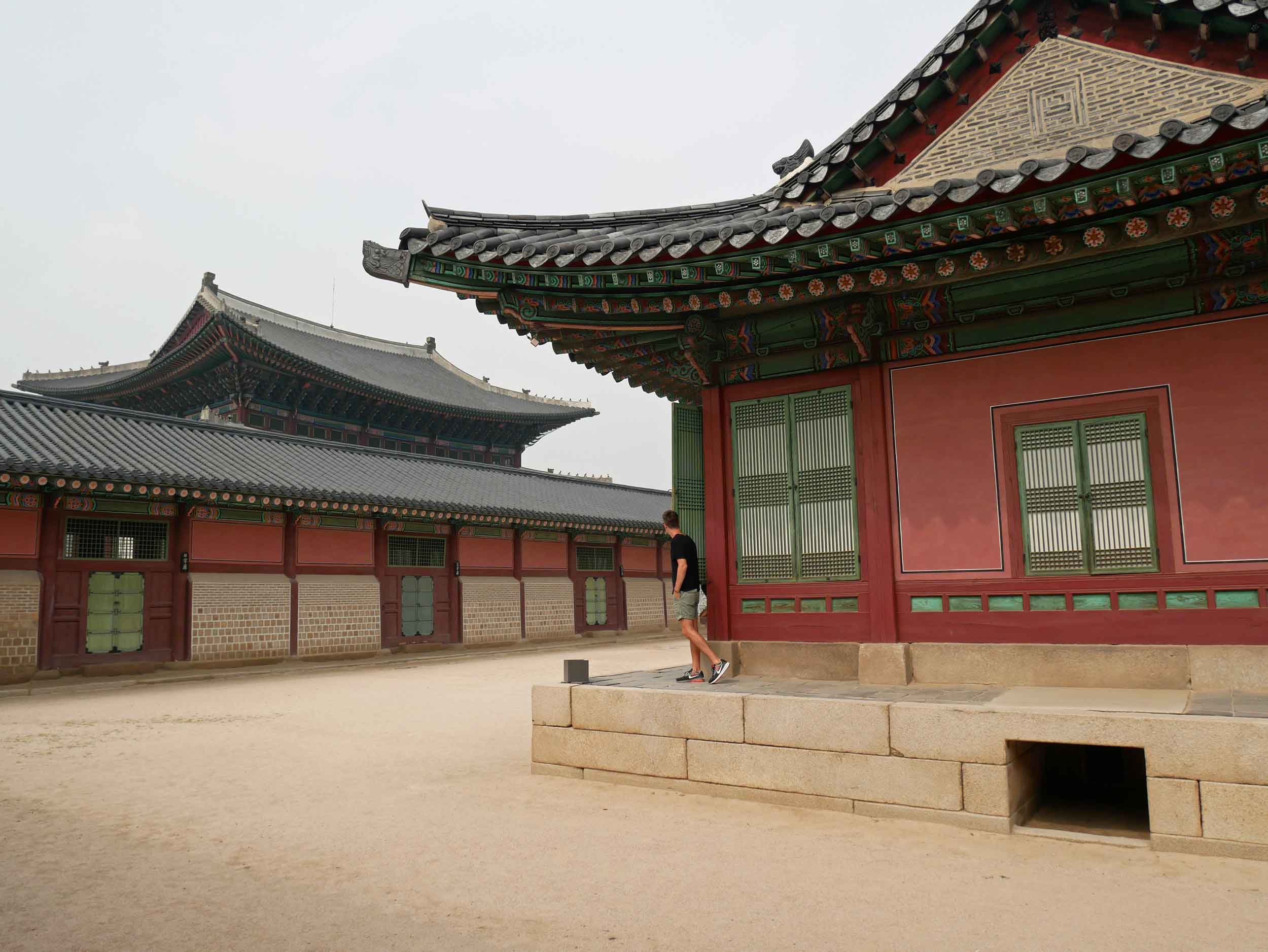
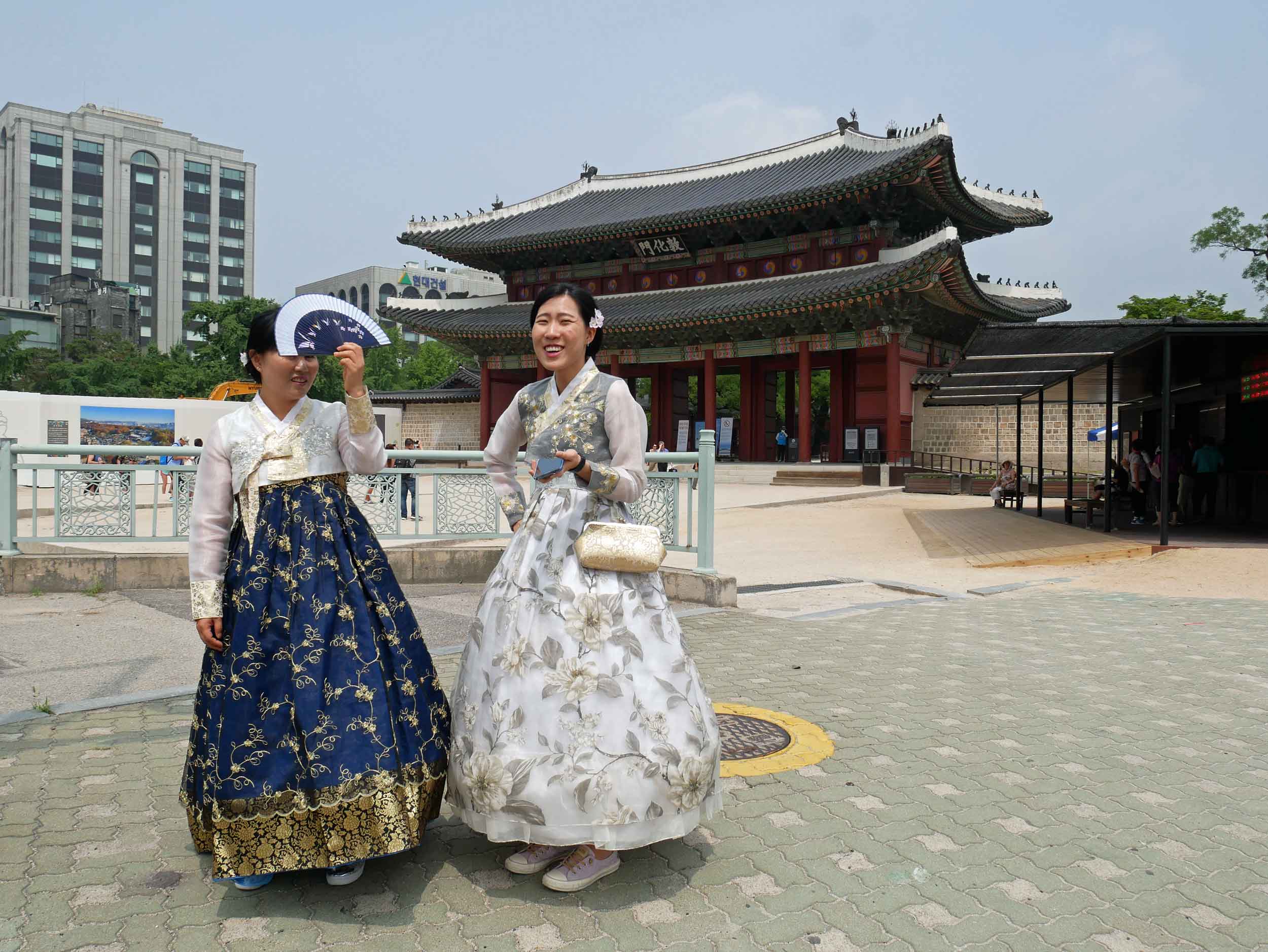
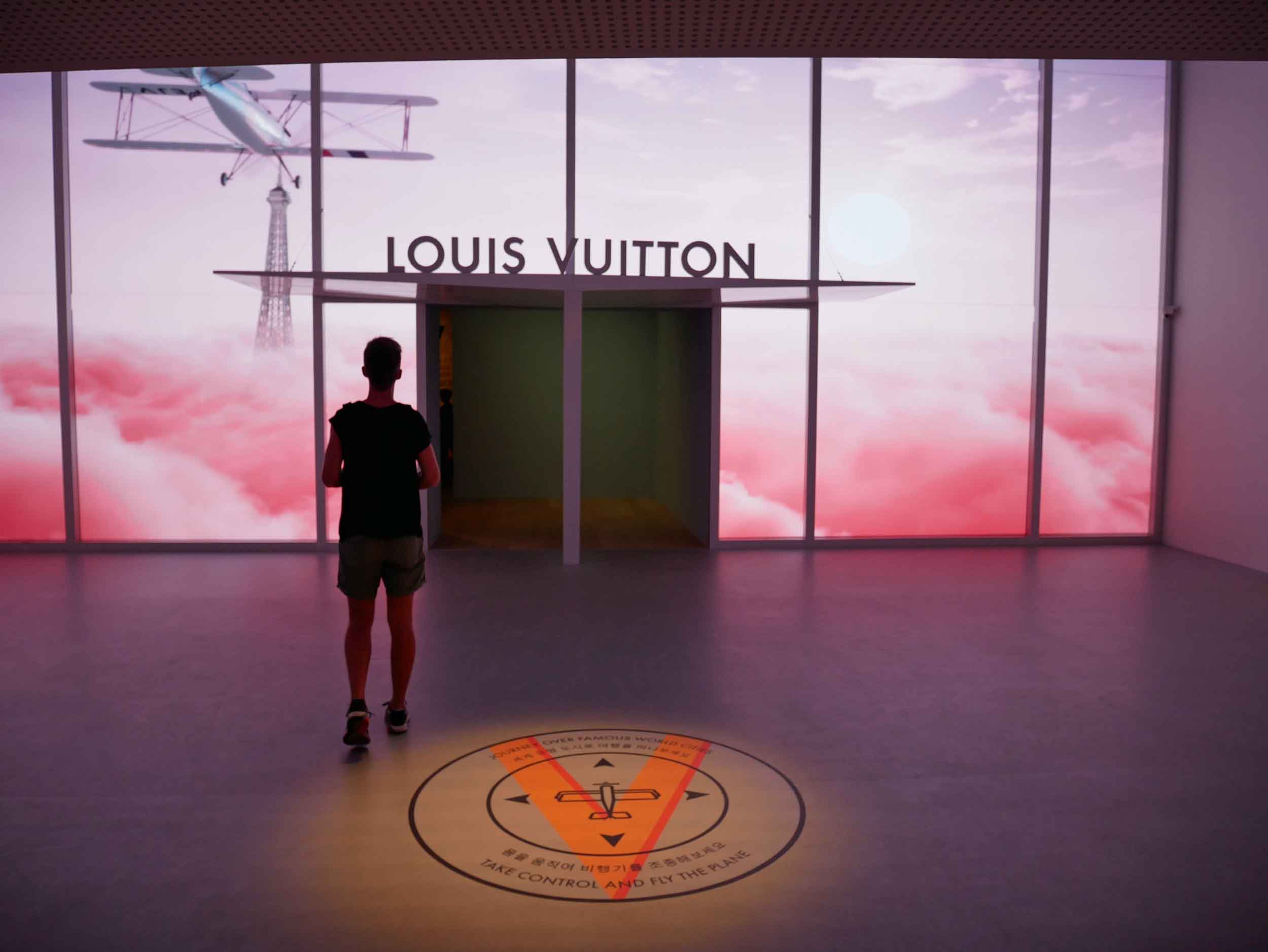
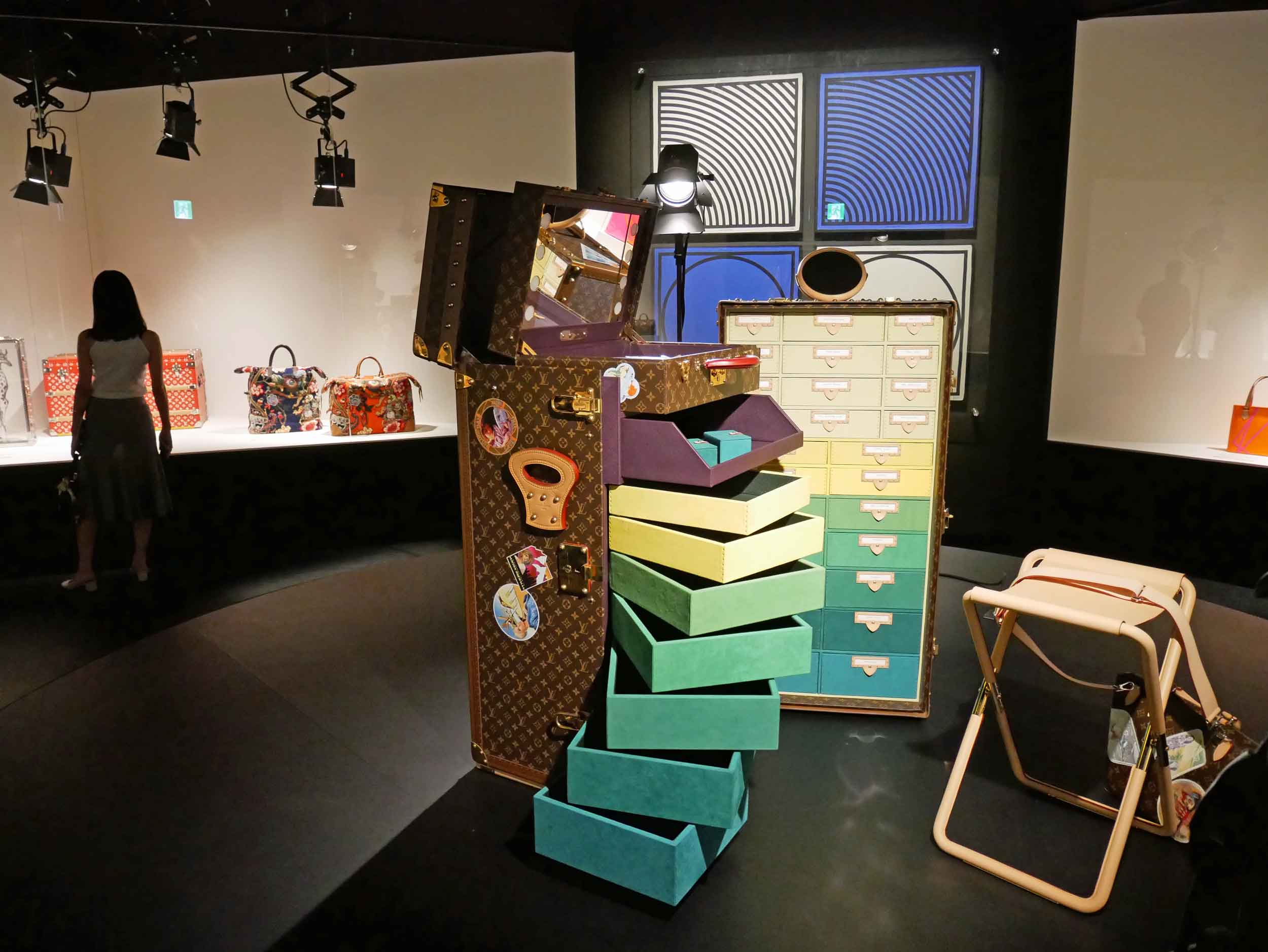
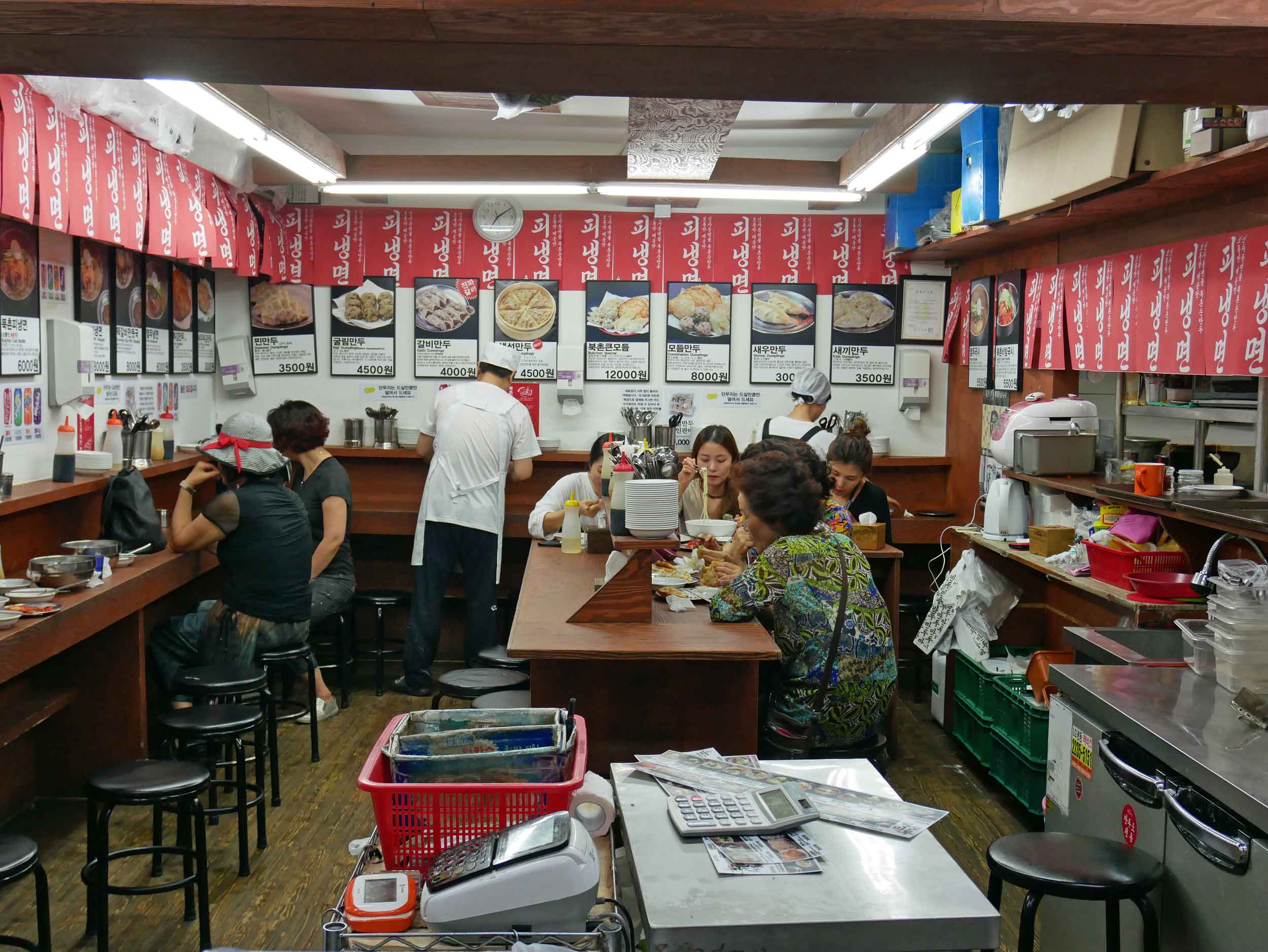
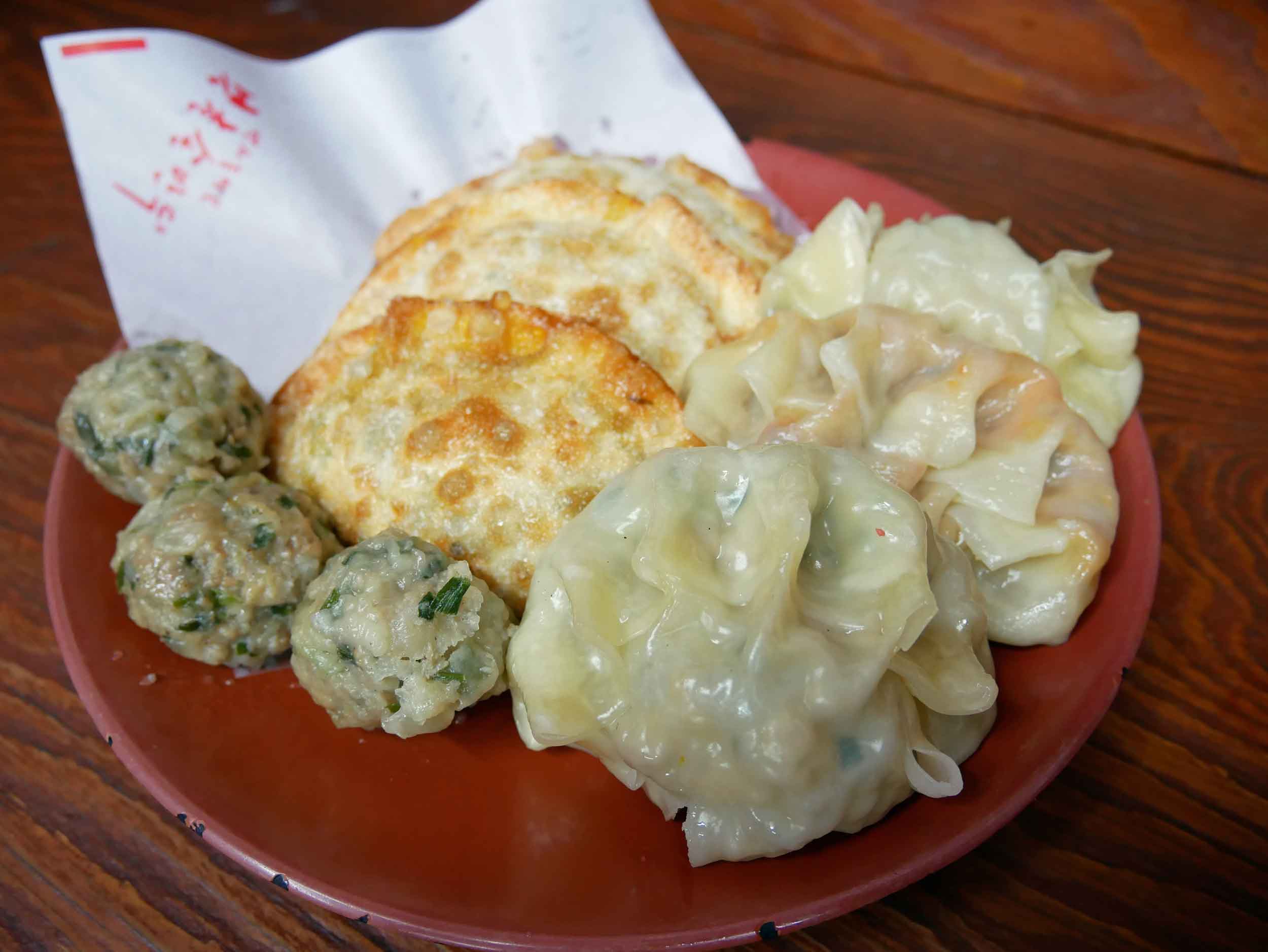
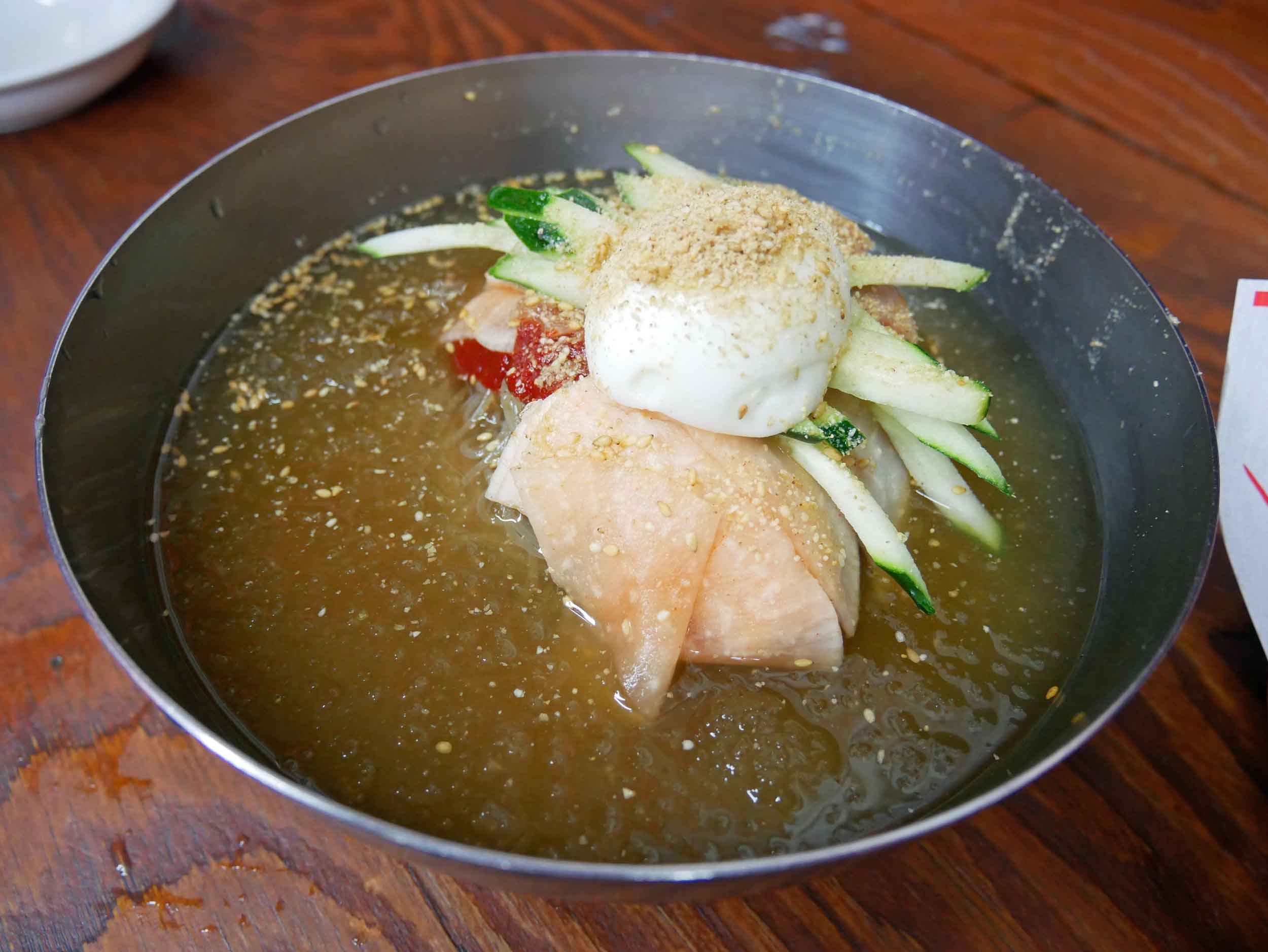
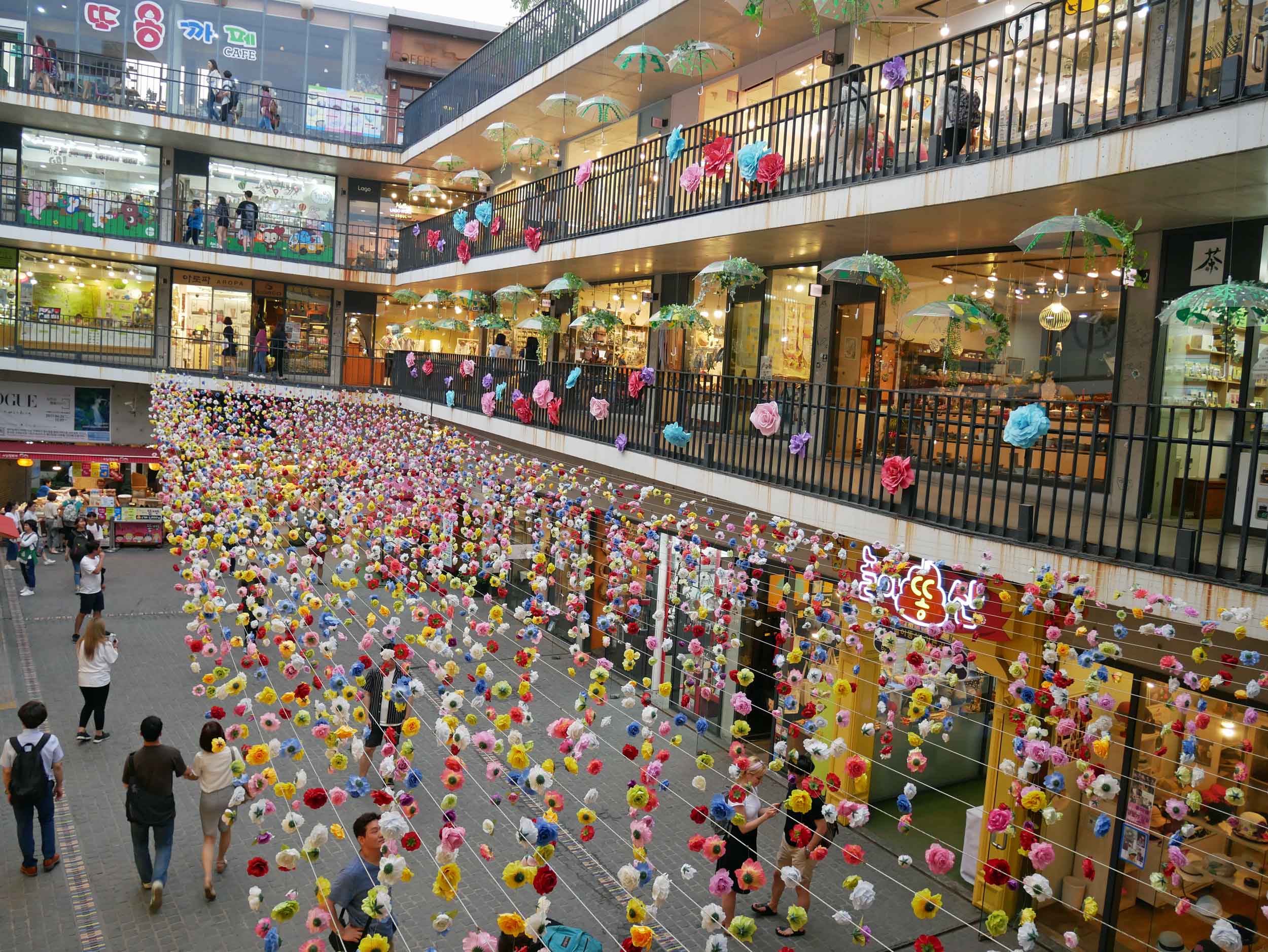
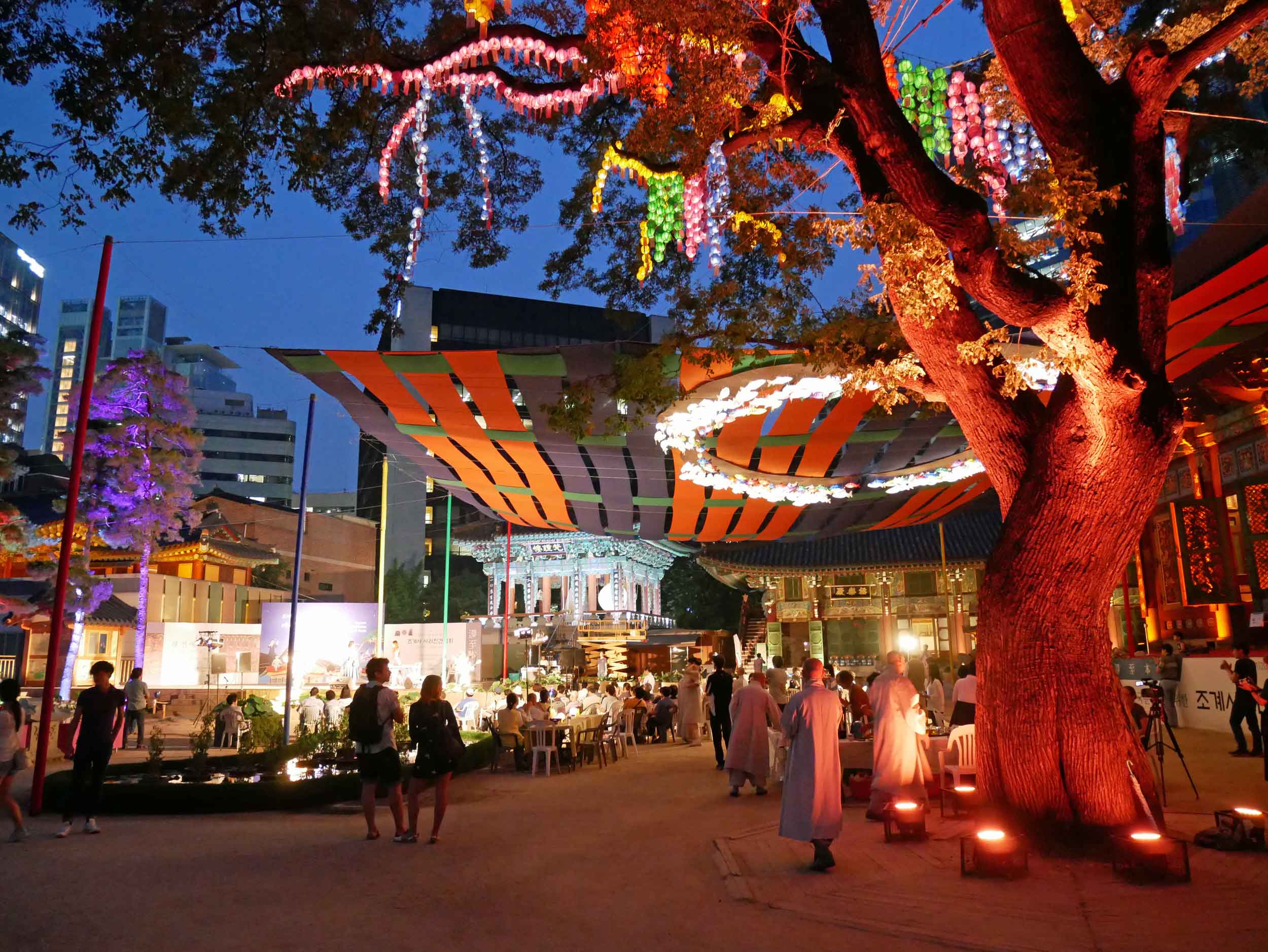
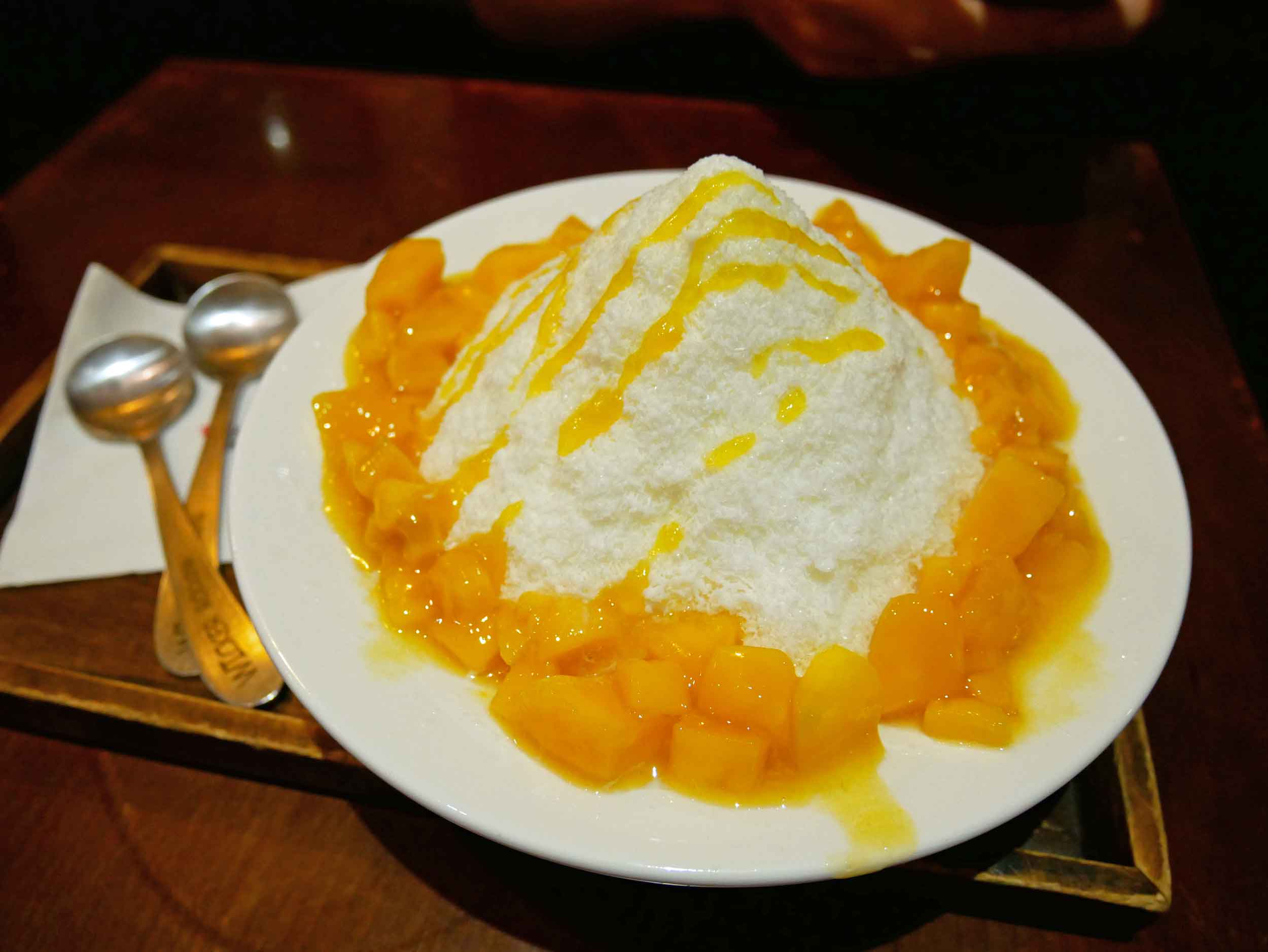
On our final day in Seoul, we joined the temple food cooking class where we learned how to make vegan zucchini and shiitake mushroom steamed dumplings (poor gluten-free Trey had to stick to only eating the filling). A monk from a nearby Buddhist temple calmly instructed us in Korean (with the help of an English translator) on the principles of temple cuisine: all work to reduce suffering, therefore, no animal products are allowed as the Buddha once said that “eating meat extinguishes the seeds of compassion.” Pungent vegetables, such as onions, garlic, chives, green onions and leeks aren’t permitted as they hinder spiritual practice (and we surmised, make chanting in close quarters less compassionate for your fellow monks ;) ).
“The characteristics of temple food show how monastic meals are a means through which Buddhist monks and nuns realize the interdependence of all lives and that they must strive to establish a world in which all love together in harmony.” – Korean Temple Food Center
That afternoon, we continued with our theme of eating with mindfulness by enjoying hot stone bibimbop, a traditional Korean dish of warm white rice topped with sautéed vegetables, fried egg, soy sauce and fermented delights. Later on, we lost the plot a little bit when we passed a steak frites food truck at a pop-up market along the Cheonggyecheon River and were too tempted by the grill not to try (sorry, Buddha!).
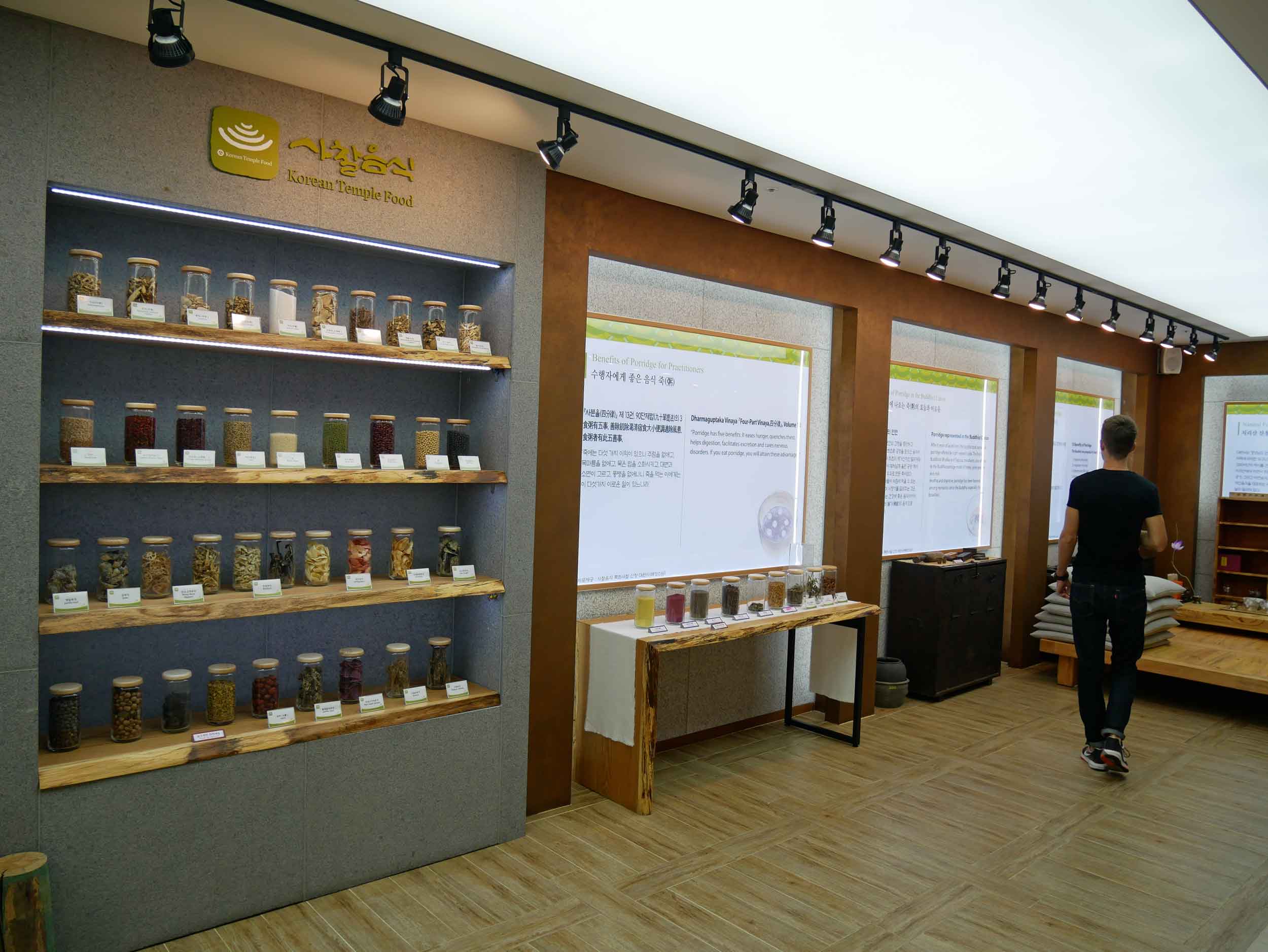
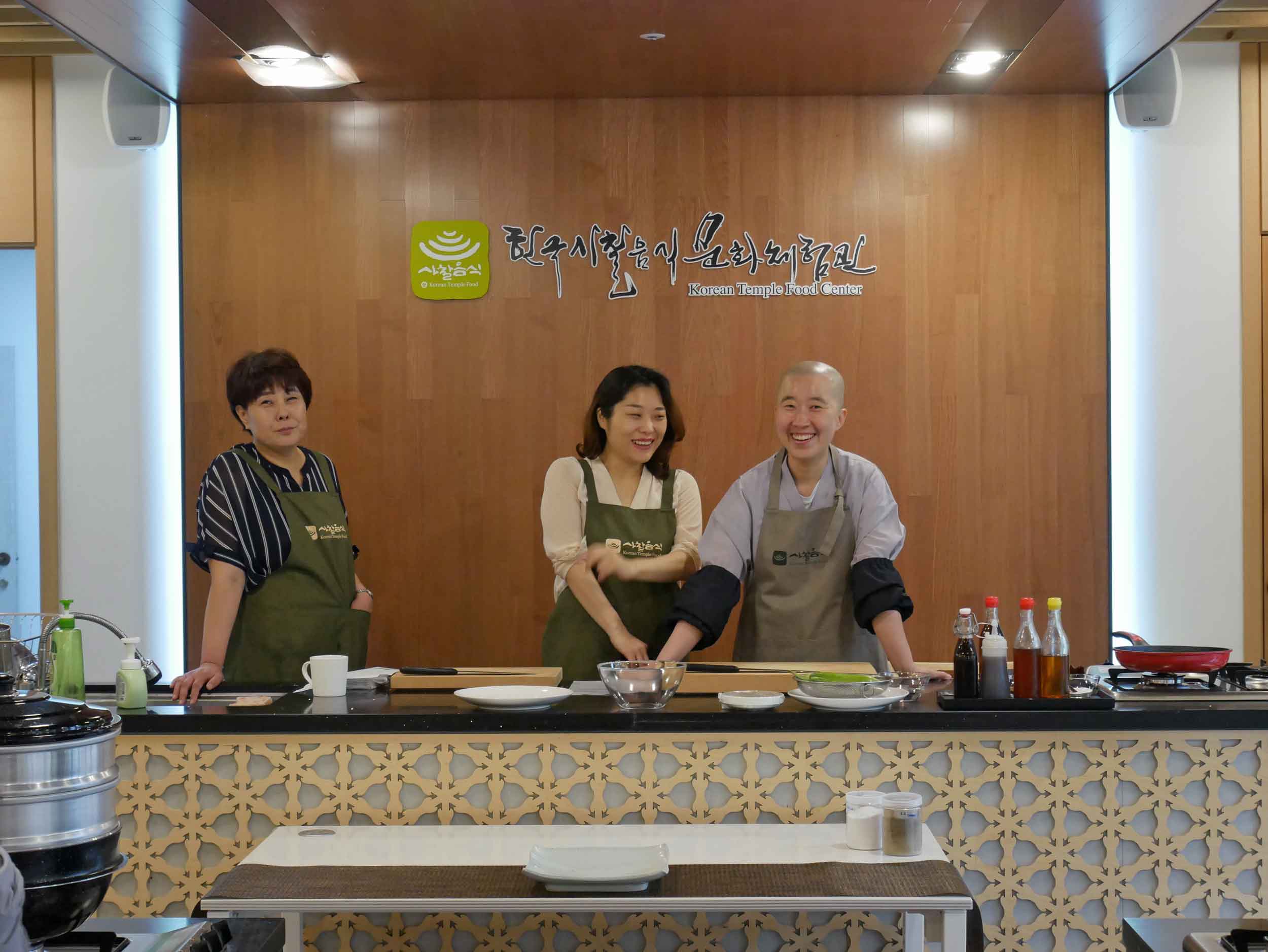
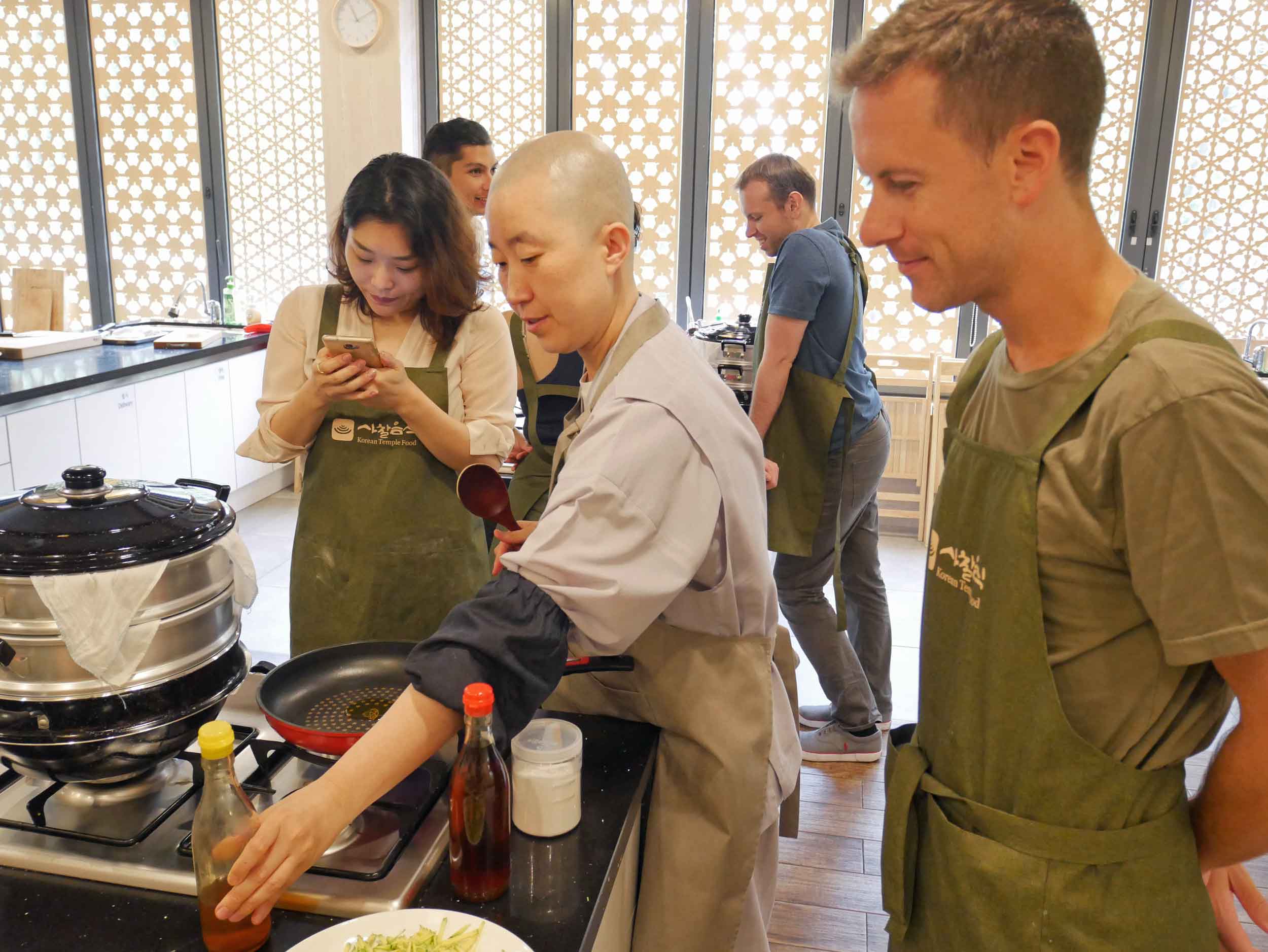
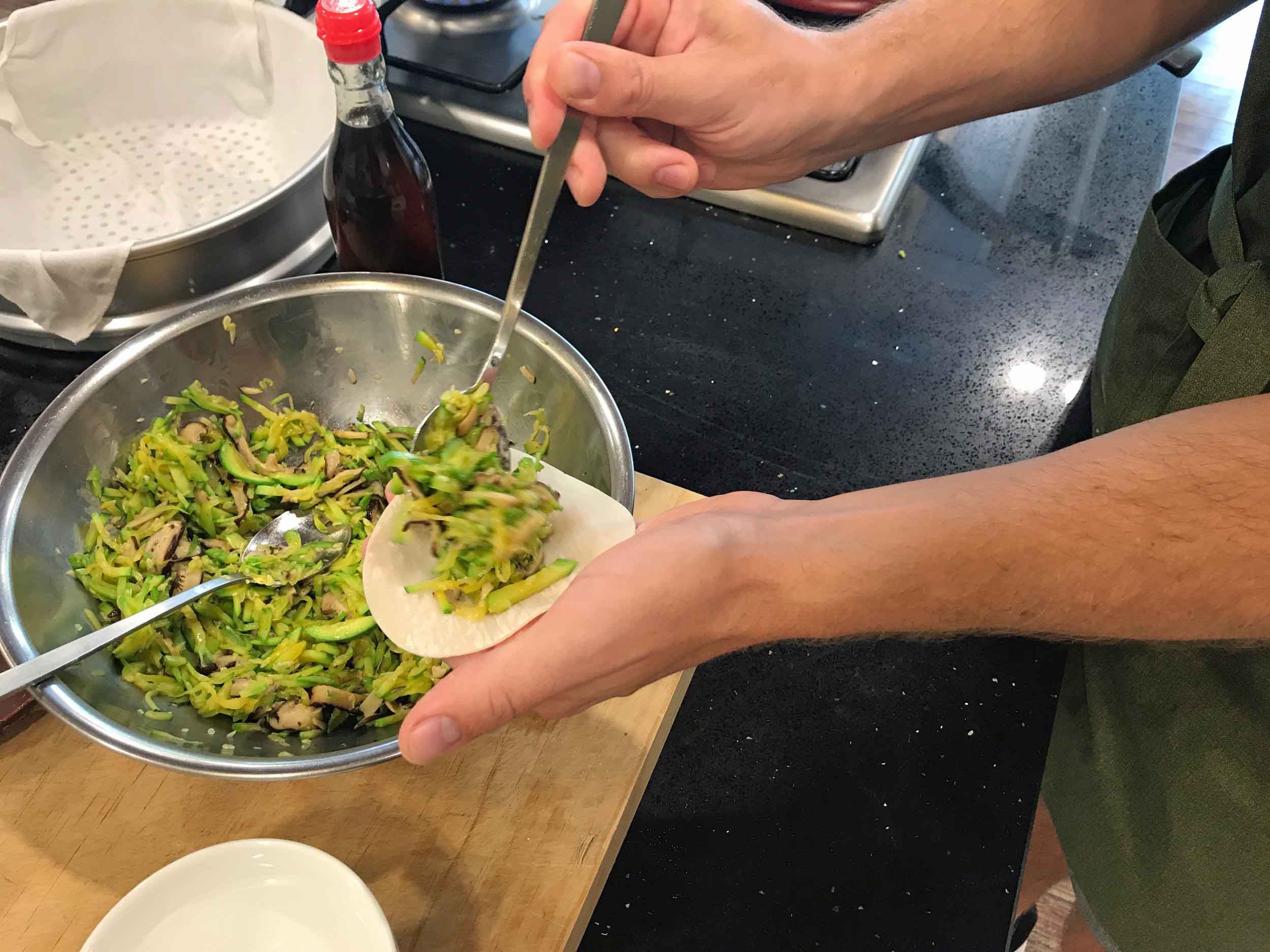
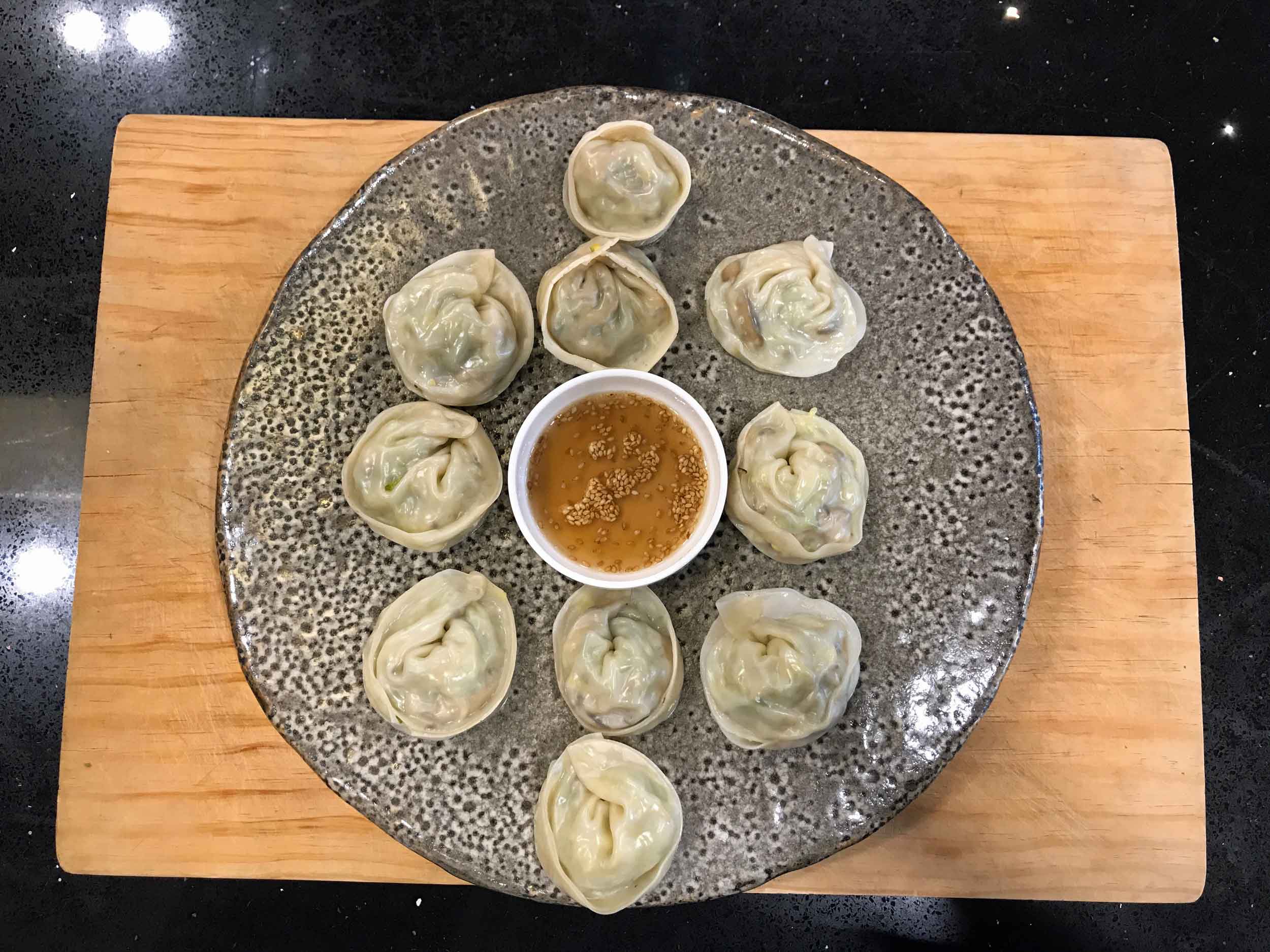
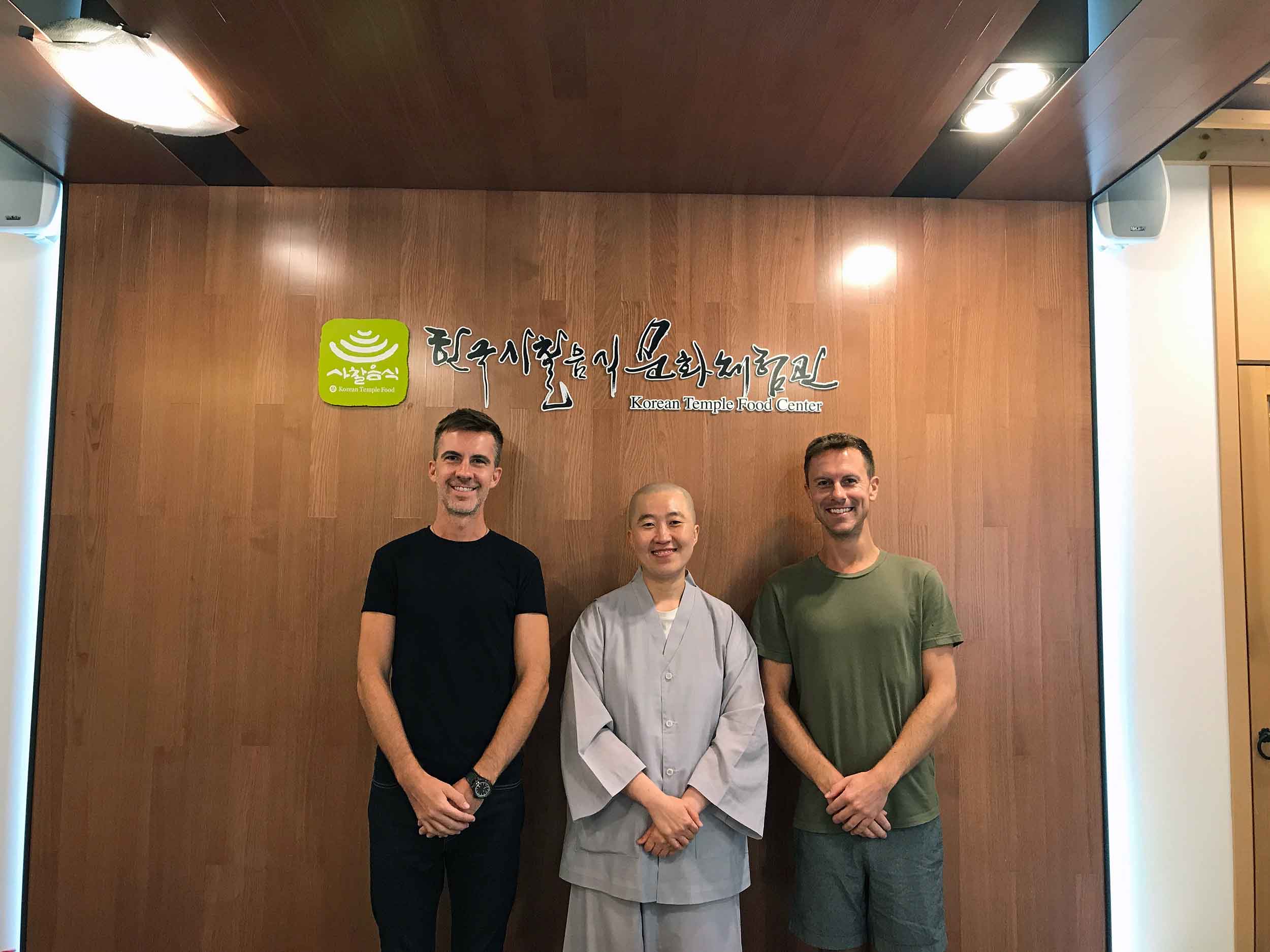


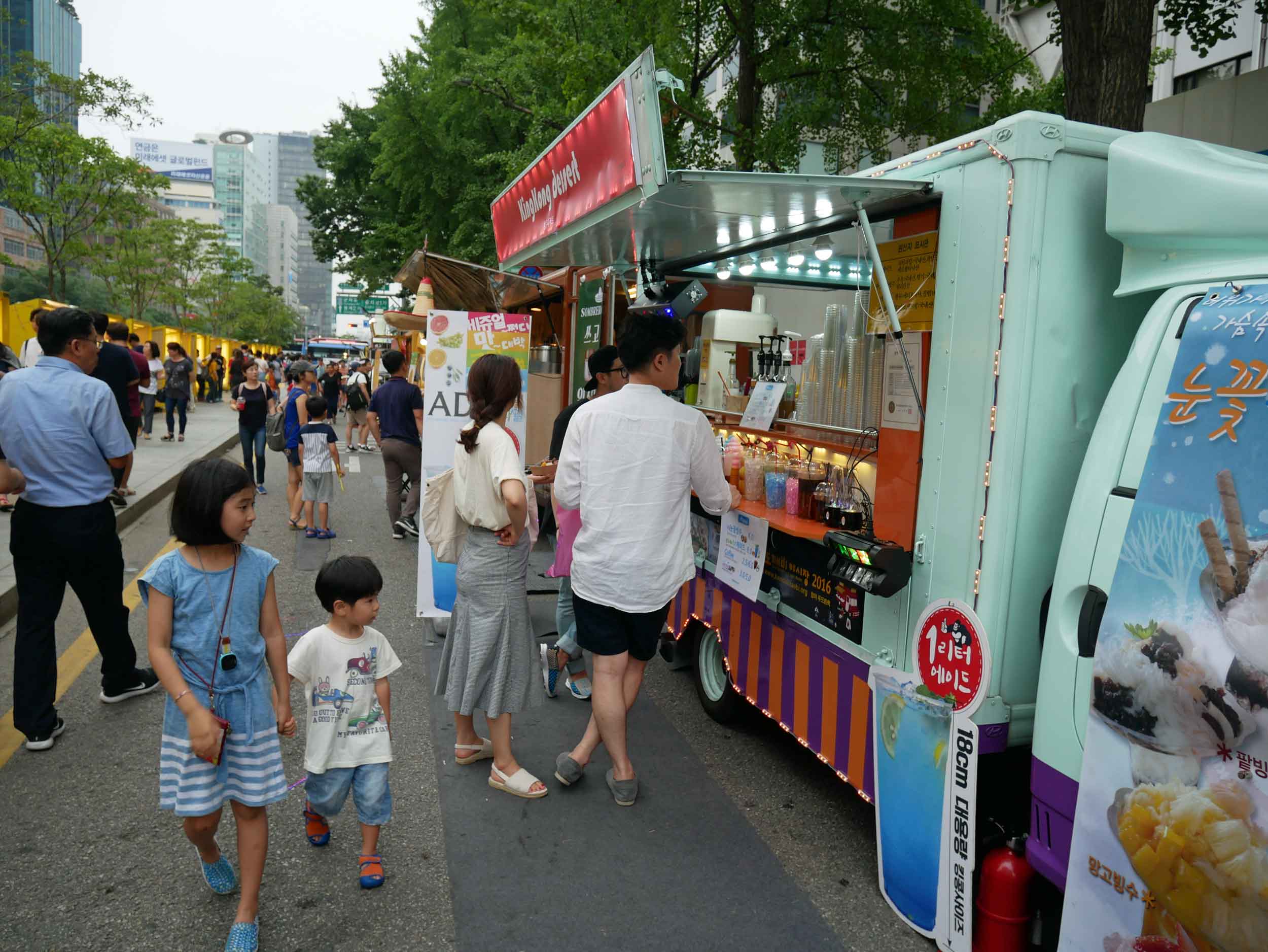
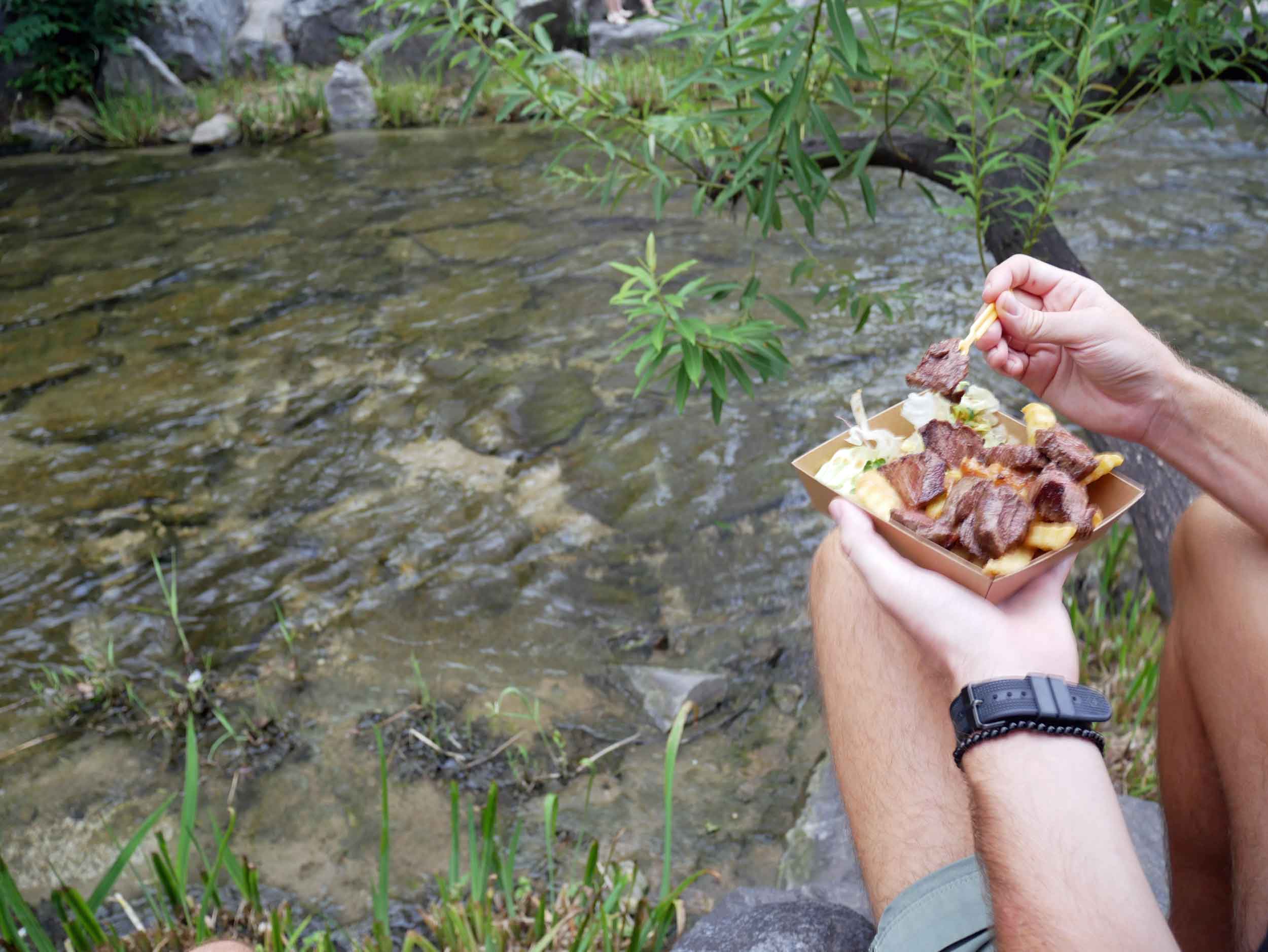
Our long weekend in South Korea was short but inspiring - from temple cuisine to street food, ancient architecture and modern marvels - and certainly gave us a reason to return, if only to continue to eat our way through this buzzing capital city.
-Martin.
